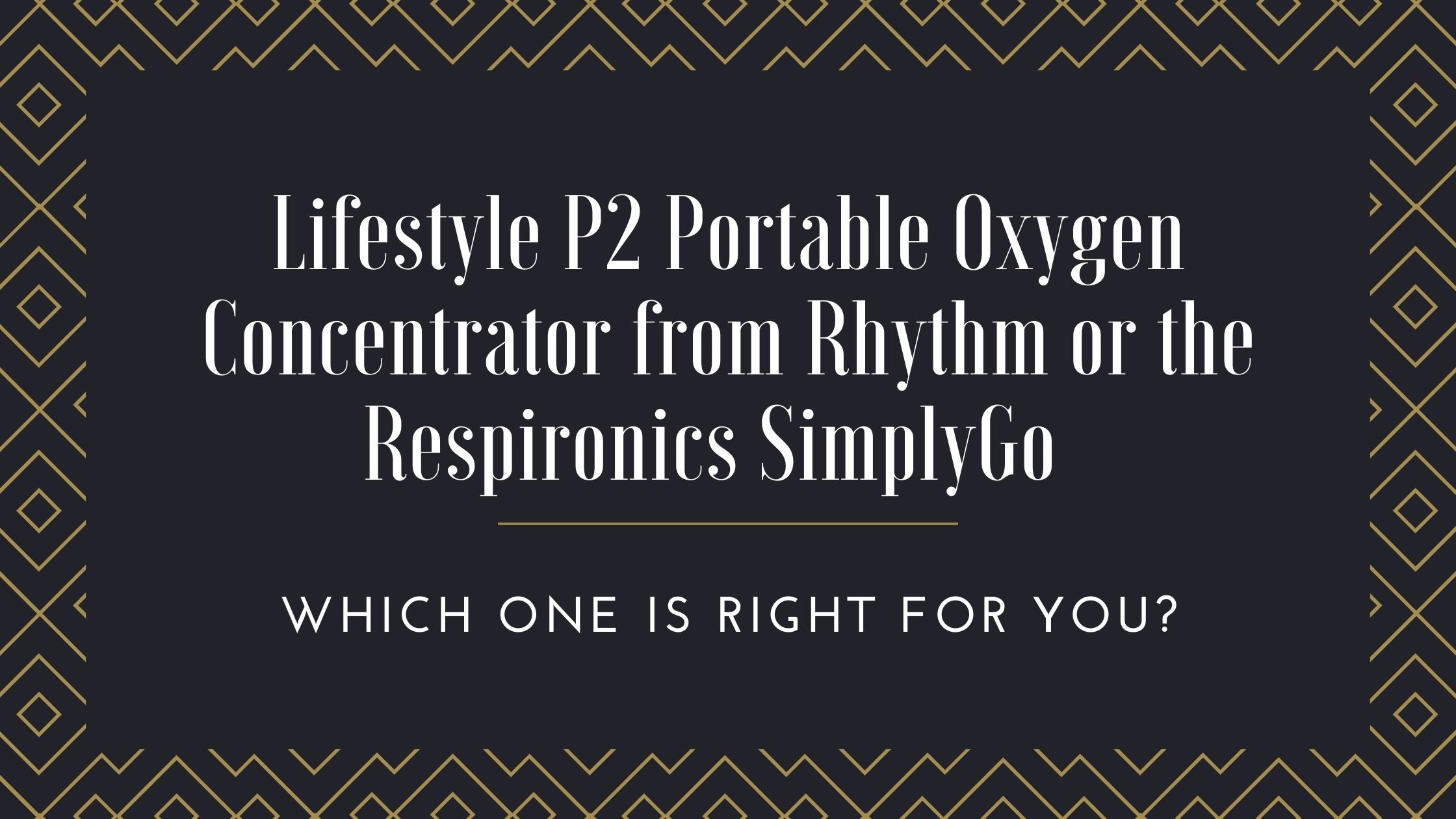
Oxygen patients have a very important job when it comes to breathing. Something so simple and second nature for most people is now an aspect of your day or night that doesn’t come as easily. In fact, without the help of a supplemental oxygen device, breathing effectively can be close to impossible, and cause a lot of health related damage.
{{cta('fa8abc2a-1e88-4fa3-82fd-1cb5b9ed43b2','justifycenter')}}
Oxygen therapy patients need an oxygen device, either in the form of an oxygen tank, oxygen canister, or a portable oxygen concentrator.
Depending on your oxygen needs set by your doctor after a series of tests that measure your oxygen levels, you will be put into the category of pulse flow or continuous flow, possibly both depending on your activity.
Similarly to how not getting enough oxygen is harmful, too much supplemental oxygen can also cause health related issues. Getting the right amount, not too little, not too much, is how you will get the best results and reap the most benefits from oxygen therapy.
The Benefits of Oxygen Therapy

Oxygen therapy has several benefits, the number one benefit is how it has been proven to add years to your life, in fact, it is the only treatment option for COPD patients that can increase your life expectancy.
Multiple studies display how using supplemental oxygen for at least 15 hours a day helps people live longer if they have severe COPD and low blood levels of oxygen.
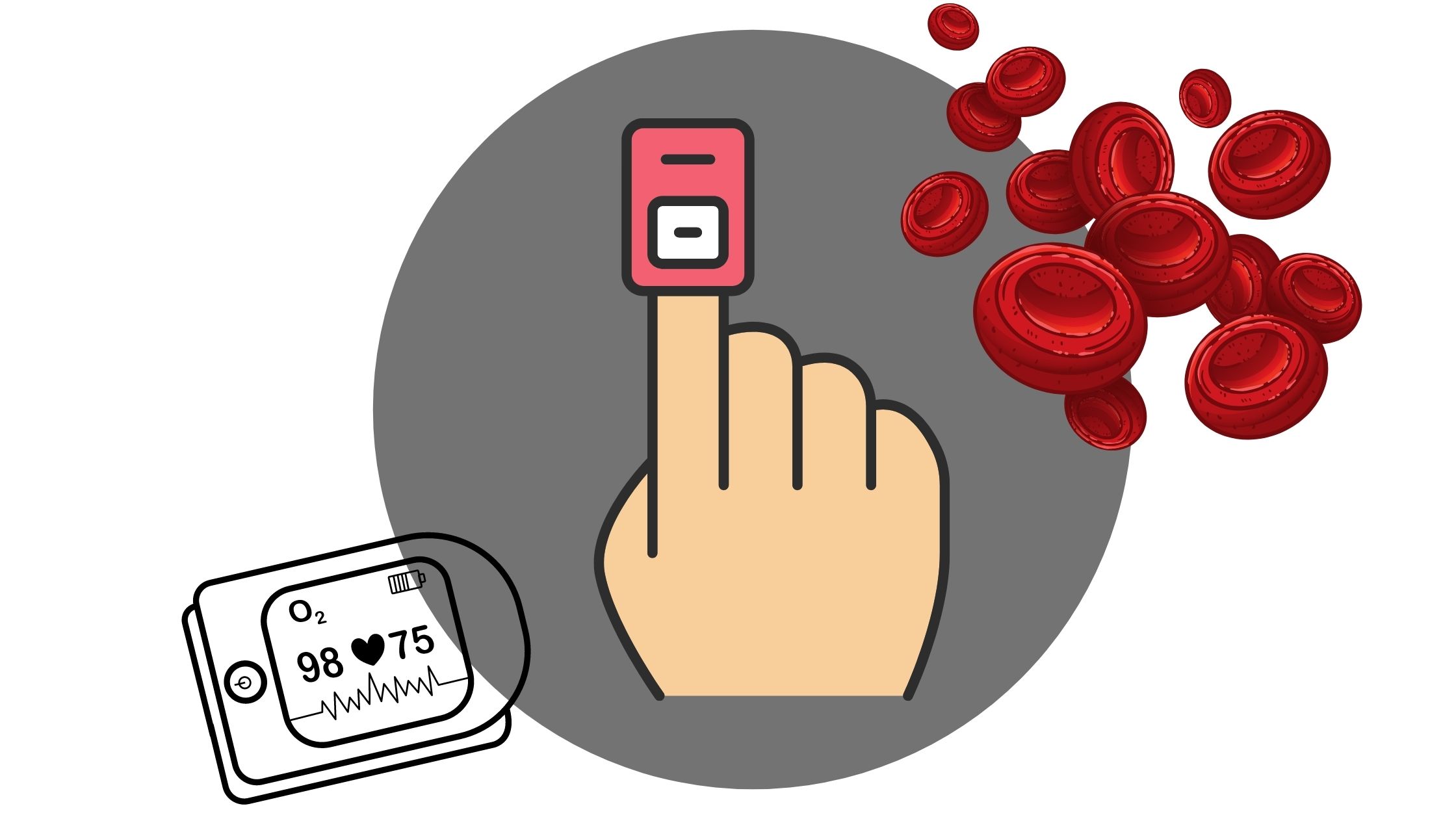
Oxygen therapy has good short-term benefits too in people who have COPD!
For one, getting the proper amount of oxygen and maintaining healthy oxygen levels throughout the day and night improves your energy levels and mood, helps you sleep better, and reduces other respiratory symptoms.
It second handedly promotes bone health and building muscle strength because you are more capable of consistent exercise!

With the right oxygen device, exercises will seem more doable, so if you are currently on oxygen and do not exercise, you might consider switching from tanks and canisters to a battery powered lightweight oxygen device like a portable oxygen concentrator!
We will display these options for portable oxygen devices in this blog!
Other treatments like pulmonary rehabilitation, exercise, and medications can ease your COPD symptoms and improve your quality of life. But it is only your portable oxygen concentrator or other oxygen device that can make a difference in the quality and quantity of life you have!
![]()
When it comes to oxygen devices, you want something that is A reliable, and this means it gives you the proper amount of oxygen and B something that is manageable to bring with you everywhere you go.
To put it simply, you will need your oxygen device all the time for the rest of your life. Therefore, it is important to have a device that is lightweight, easy to carry, requires minimum maintenance, and never runs low on oxygen.
We recently added new portable oxygen concentrators to the LPT Medical catalog that do just this.

The Lifestyle P2 from Rhythm Portable Oxygen Device
The Lifestyle P2 from Rhythm is one of the smallest and lightest units on the market. At 4.37 pounds, it offers pulse settings 1-5 and gets up to 5 hours of battery life.

Rhythm products, specifically their Lifestyle P2 portable oxygen concentrator, is not only built to keep oxygen users like you safe, comfortable, and independent, it is also a source of guidance and education. Lifestyle Mobility Aids exists with a simple mission— to take care of people with medical needs, including those with respiratory issues that need supplemental oxygen to survive.
What Comes With the P2 Rhythm Portable Oxygen Concentrator?
- P2 Rhythm Portable Oxygen Concentrator
- AC Power Supply
- DC Power Supply
- Rechargeable Battery
- Protective Carrying Case
- Shoulder Strap
- Tubing
- Filter
- Manual
- 3 year Warranty
Additional Accessories Available for the P2 Rhythm Portable Oxygen Concentrator:
- Battery
- AC Power Supply
- DC Power Supply
- External Battery Charger
- Custom Carrying Case
Compact and Lightweight
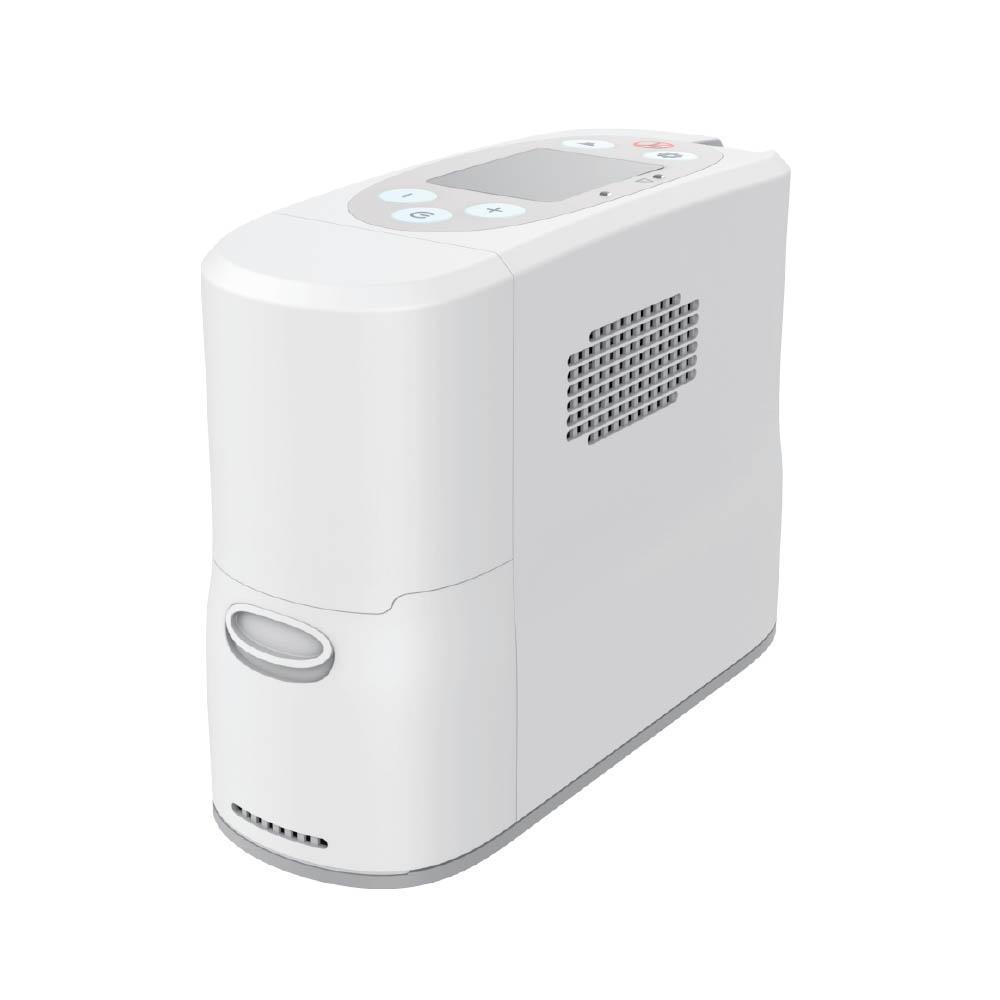
The Portable Oxygen Concentrator from Rhythm stands 6’3” tall, 3.3” wide, and 8.7” long, making it as small and compact as an oxygen device can be while still offering you a powerful pulse flow of oxygen that meets all of your oxygen requirements.
This is a pulse flow device that weighs 4.37 pounds, so it weighs less than the Inogen One G3, and the One G5, which is great news for you because less weight means more mobility, and more mobility is exactly what you need as an oxygen patient.
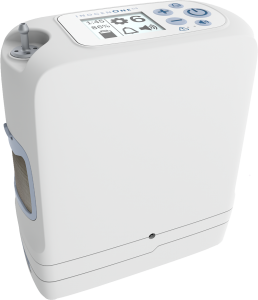
Therefore, having a small and compact oxygen device helps propel you forward to reach your mobility goals, rather than dragging you down.
Perfect for Travel and Everyday Use
Weighing under 5 pounds, your Lifestyle P2 Portable Oxygen Concentrator is the perfect travel companion. You can use this device everyday and every night as your main source of oxygen supply, and it fits in the palm of your hand!
Ditch the heavy cumbersome oxygen tanks!
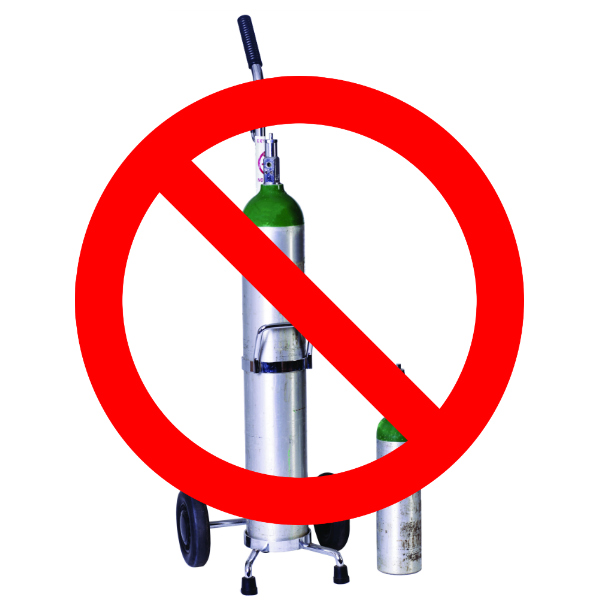
Take the P2 on the plane with you, it is FAA approved for travel, and don't worry about running out of oxygen, the P2 runs off of rechargeable batteries that can be recharged anytime!
Simply plug in the AC powered cord into the wall outlet as you would charge a cell phone, and continue to breathe. Wherever you go in the world, oxygen will follow, as long as you have your P2 by your side.
Oxygen Output That Will Never Let You Down
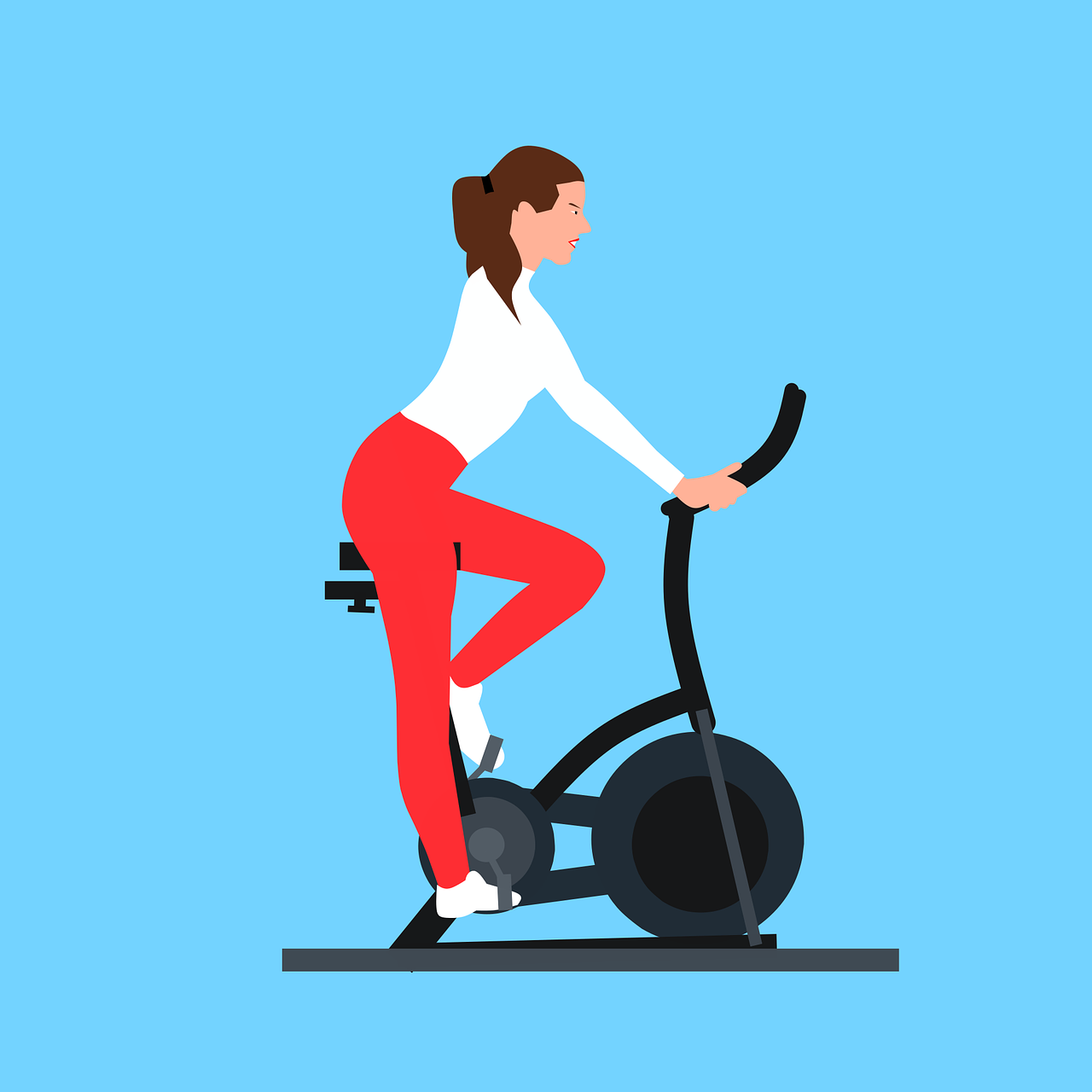
The Rhythm P2 is a pulse flow portable oxygen concentrator with settings from 1-5, offering almost every pulse flow oxygen patient a chance to experience life in a way oxygen patients never had before.

The powerful compressor inside the device offers high quality oxygen as pure as 96%. The high absorption sieve beds require less maintenance and less stress for you! On top of all of this, the P2 produces barely any noise as far as portable oxygen concentrators go.
Simple Charging
The battery life of the P2 is notable, lasting up to 5 hours on a setting 1 and it can last almost 2 hours on the highest setting 5!
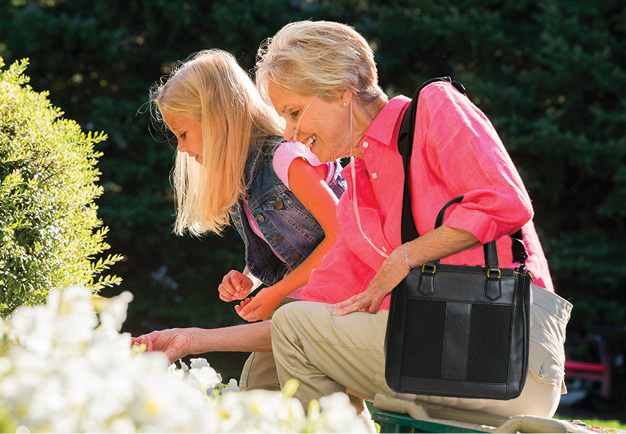
Owning two of these batteries is great option for taking full advantage of owning a battery powered oxygen device. Use one battery inside you device at a time and charge the other battery so it is ready to go using the external battery charger.
Switching the battery is as easy as it is to charge it, just slide the battery into place until the latch returns to the upper position. There will be an audible sound when the battery is in position.
The Respironics SimplyGo is another portable oxygen device that many oxygen users, specifically those who need continuous flow oxygen use!

The Respironics SimplyGo Portable Oxygen Concentrator
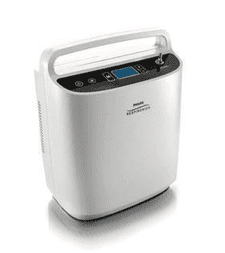
Philips Respironics broke the stereotypical design for continuous flow portable oxygen concentrators when they released the Respironics SimplyGo. And ever since it was released it has been one of the top continuous flow units on the market!
However, its small size isn’t the only reason it’s been one of the top units on the market. Backed by one of the biggest names in the respiratory field, the SimplyGo is as reliable as they come!
First Continuous Flow Portable Under 15 Pounds
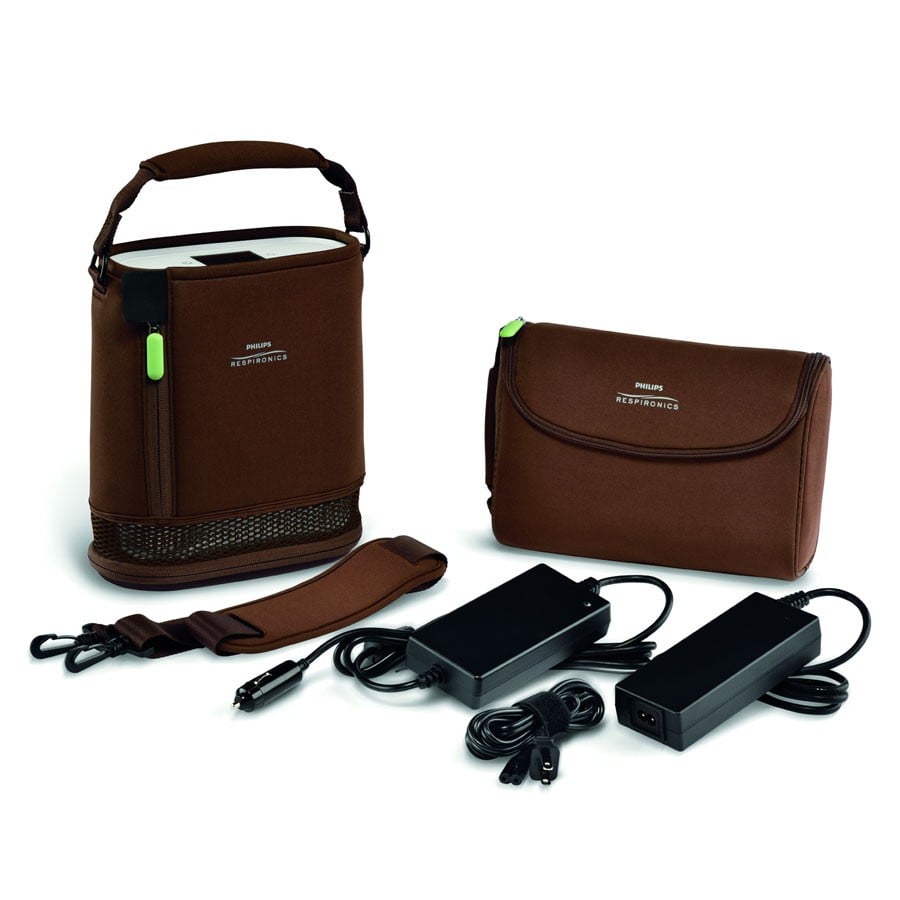
Weighing in at a mere 10 pounds and standing 10" H x 6" D x 11.5" W, the SimplyGo is one of the smallest and lightest continuous flow portables available! You will be able to bring it with you wherever you go and you will have no problem finding a place to store it.
Your SimplyGo will easily fit underneath the seat in front of you on the airplane, you can store it on the floor of your car or in the passenger seat as you drive, and when you don’t need to use it you will be able to put it in your closet without having to clear space for it.
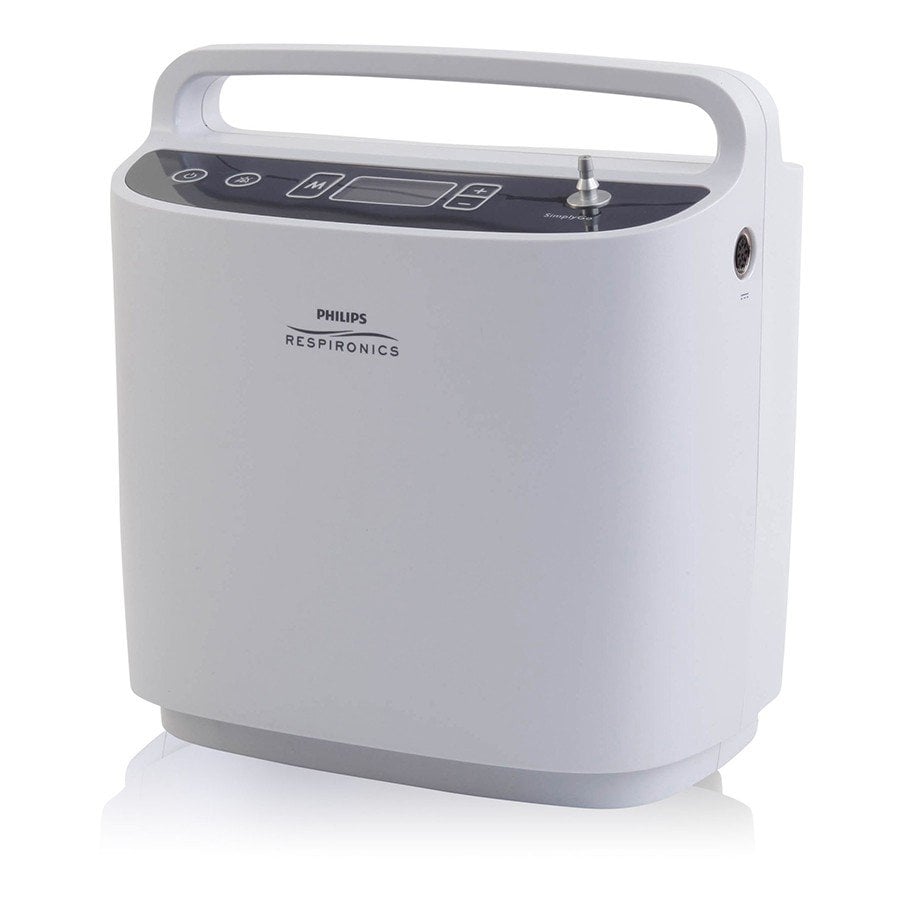
Although 10 pounds is extremely light for a continuous flow portable oxygen concentrator, it’s still pretty heavy to carry. But you won’t need to worry about that! Your SimplyGo package will include a custom carrying case and a wheeled travel cart so you have the option to carry it over your shoulder or you can pull it behind you on the travel cart.
Designed for 24/7 Use
![]()
Having a portable oxygen concentrator that is designed to run 24/7 has some major advantages! You’ll never have to worry about renting a concentrator when you travel and you will always have a backup to use at home!
The Respironics SimplyGo is CPAP/BiPAP compatible and it is equipped with both pulse flow and continuous flow oxygen delivery modes to cover you 24/7. It offers pulse flow settings 1-6 and continuous flow settings 0.5-2.0 LPM.
Not to mention its compressor is rated to last 20,000 hours!
One additional feature the SimplyGo has to offer is its sleep mode technology! Whether you’re on the airplane or relaxing in your chair at home, and you feel yourself dozing off, you can turn sleep mode technology on to ensure your oxygen gets delivered while you are sleeping.
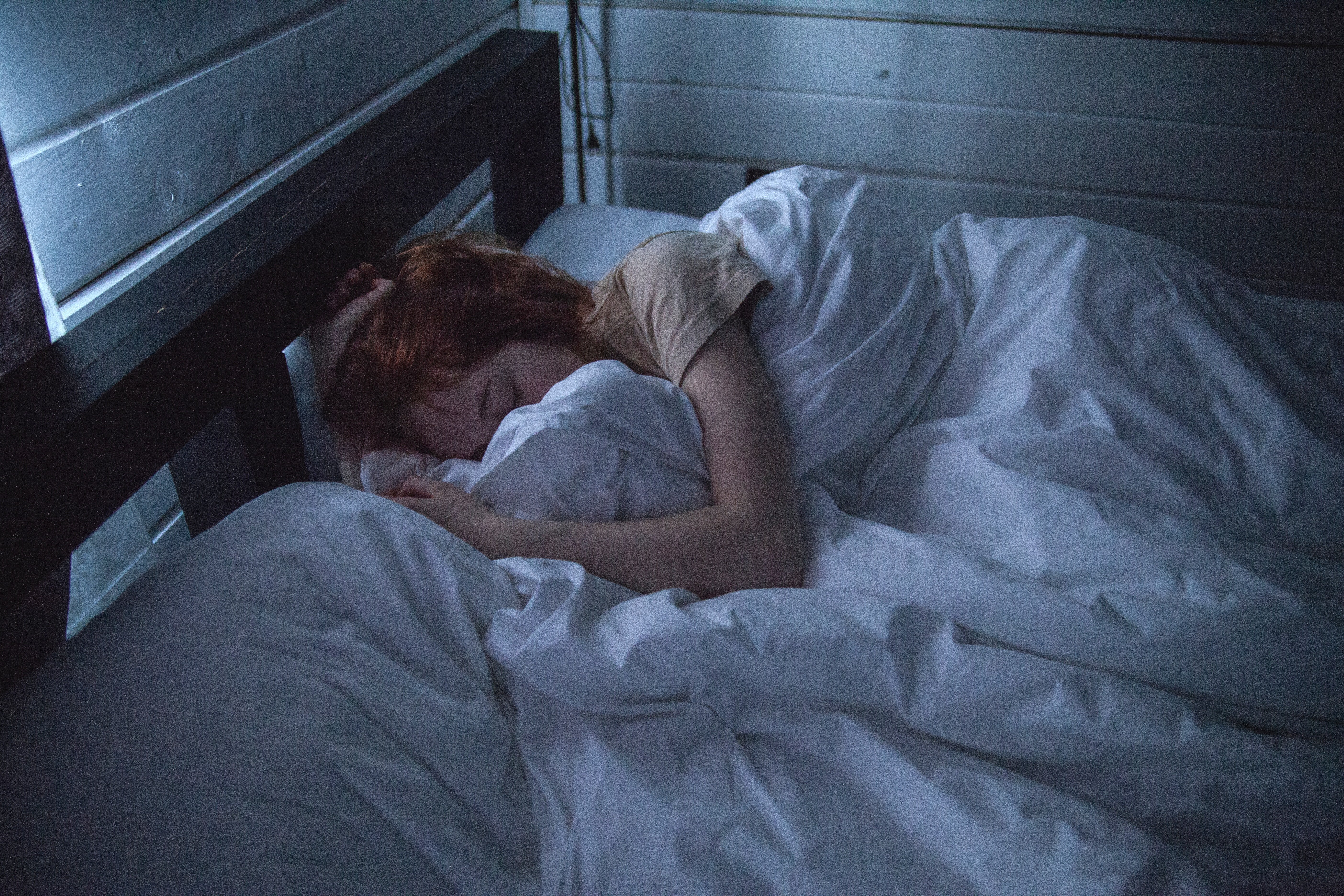
When you turn sleep mode technology on your SimplyGo increases its sensitivity to detect your breath and it softens the pulse flow delivery so it doesn’t wake you up. Don’t worry, if your SimplyGo doesn’t detect a breath or if you breathe through your mouth it will automatically switch back over to continuous flow to ensure you get your required oxygen.
Can Operate Using 1 or 2 Batteries
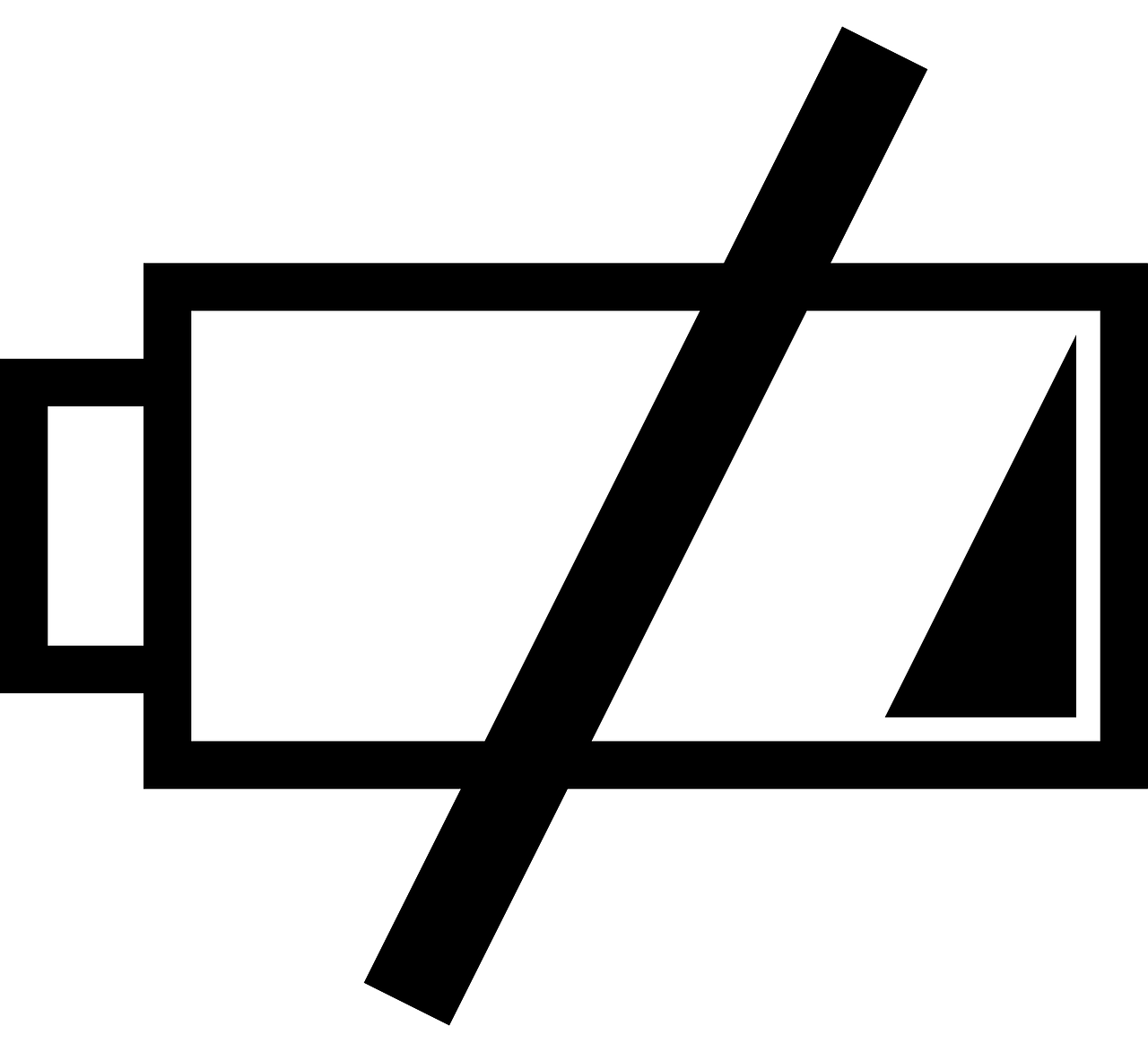
The Respironics SimplyGo gives you the ability to operate it using one or two batteries using the optional external battery module. One battery will be perfect for things like exercising, running quick errands, and doing things around your home while using two batteries is ideal for traveling, road trips, and extended trips away from your home!
Whether you want to run your SimplyGo off of two batteries, or you simply need a replacement battery for the one you already have, replacement batteries are lightweight and easy to swap in and out. Batteries can be charged through the portable oxygen concentrator with a wall or car charger or externally with the external battery charger.
AC Power Supply
The AC power supply is ideal for home use or to power your concentrator in your hotel room/cruise ship room. It is equipped with a 110v power cord and you can use your SimplyGo on every oxygen setting while it is plugged in.
In fact, the AC power supply essentially turns your SimplyGo into a home oxygen concentrator. As long as your SimplyGo is plugged into the AC power supply it will give you an endless supply of oxygen!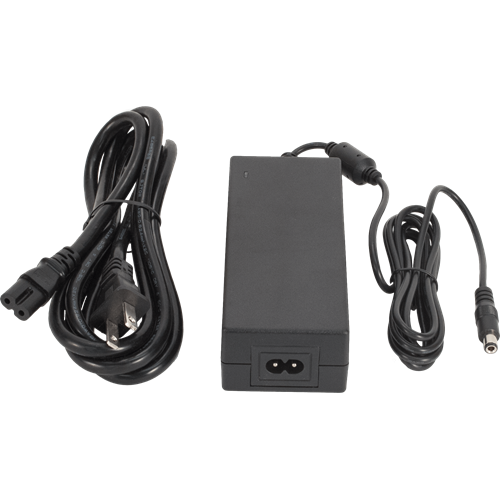
DC Power Supply
The DC power supply gives you the ability to power your SimplyGo and recharge your batteries on the go! It is equipped with a 12v power cord allowing you to plug it into the 12v outlet or cigarette lighter in your car, truck, boat, or RV.
Unlike some of the other continuous flow portables on the market, your Respironics SimplyGo will be able to operate on every oxygen setting while you are recharging your batteries with the DC power supply. Just remember to turn your vehicle on before you plug your SimplyGo into the DC power supply. This will prevent you from blowing a fuse or draining your vehicle’s battery
Other accessories for the Respironics SimplyGo:
- Custom Carrying Case
- Humidifier Kit
- Travel Cart
- External Battery Charge
- External Battery Module
Overview
Overall, the Lifestyle P2 Portable Oxygen Concentrator is one of your best options for pulse flow oxygen devices! On the other hand, if you need continuous flow, the Respironics SimplyGo is still a lightweight oxygen device that is capable of fulfilling all of your oxygen needs.
Speak with a respiratory specialist today, 1-(800)-946-1201. They are here to answer your questions about the Lifestyle P2 and the Respironics SimplyGo as well as the othre mazing devices LPT Medical has to offer!
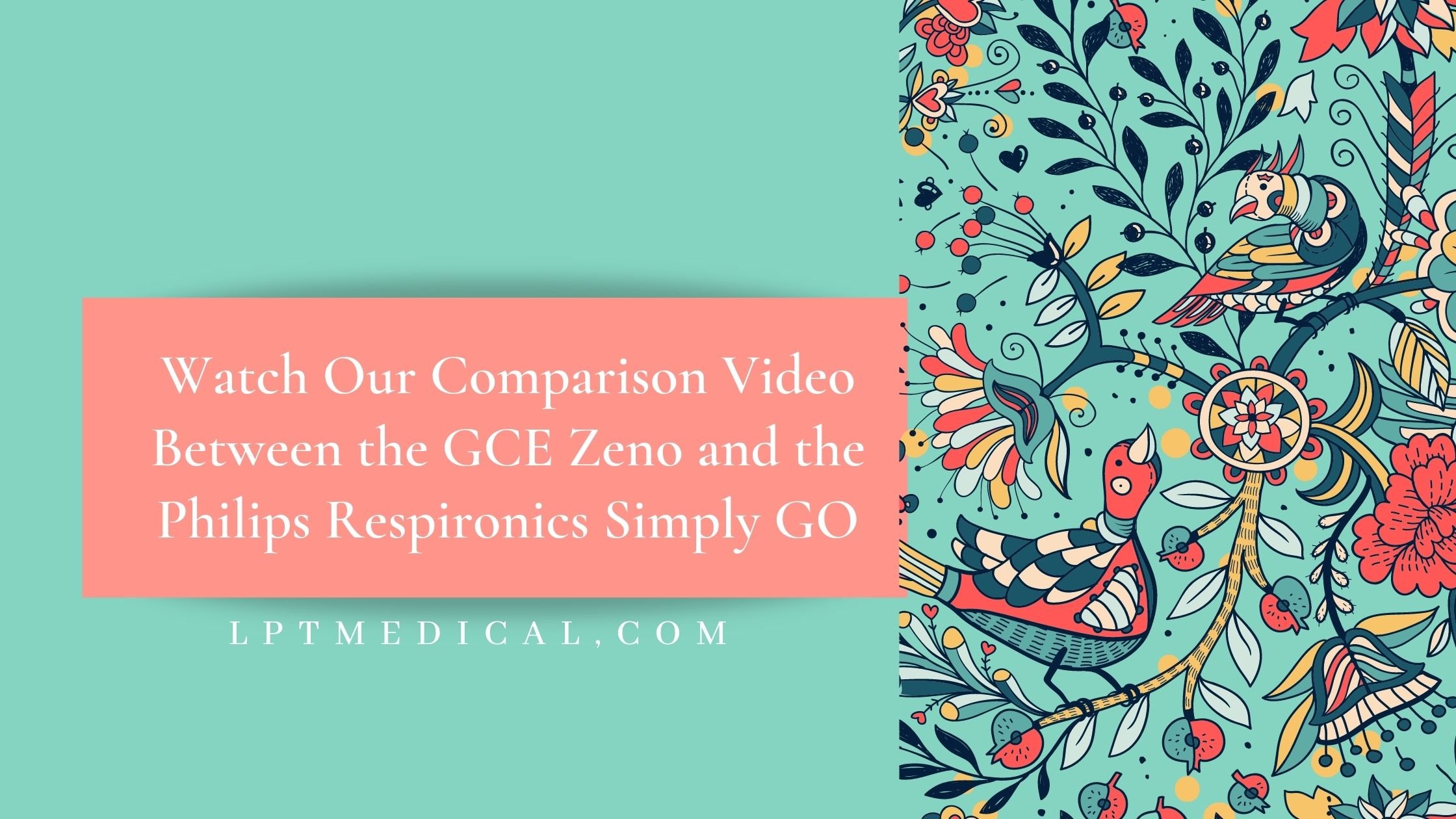
We created a comprehensive guide into the similarities and differences between the GCE Zeno and the Respironics Simply go portable oxygen concentrators. We also made a video for you to watch that takes you through everything you need to know about these two portable oxygen concentrators.
{{cta('fa8abc2a-1e88-4fa3-82fd-1cb5b9ed43b2','justifycenter')}}
If you are a long time oxygen patient or were recently given a prescription to be on supplemental oxygen, and you are in the market for a continuous flow portable, don’t miss out on watching this video!
Both of these devices are great options for people who need continuous flow oxygen concentrators. We are comparing these two devices so that you can decide for yourself which device has the features you want and need in an oxygen device.
Similarities of the GCe Zeno and the SimplyGo \
While there are a few notable differences between the GCE Zeno and the Respironics SimplyGo, they also have a lot of similarities!

Similar Flow Rates
Both of the GCE Zeno and the Respironics SimplyGo devices can go up to pulse flow settings 1-6 and continuous flow settings 0.5-2.0 LPM. So this device can fulfill oxygen patients' needs across the spectrum.
Because theses oxygen devices are continuous and pulse flow devices, you can hook up these devices to your BiPap machines and use them while you sleep!
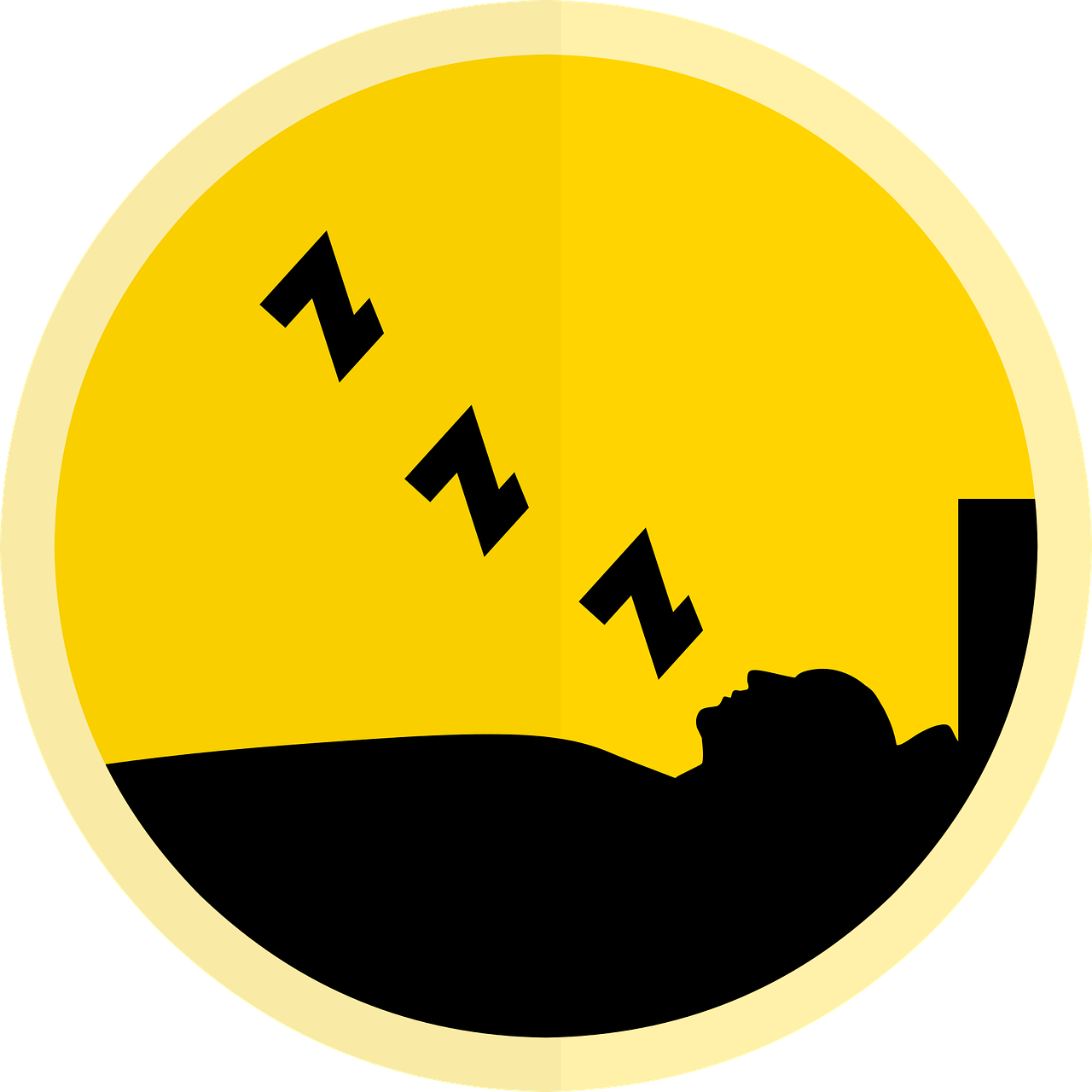
Both are FAA Approved
Both of these devices, and all of the devices LPT Medical carries, are FAA approved, meaning you can carry them on a plane with you, and use your oxygen device while you travel!
This is a huge benefit to owning a portable oxygen concentrator compared to using oxygen tanks and canisters.
All you need is an extra oxygen device battery to bring along with you for the duration of your flight, and also be sure you let your airline know you are traveling with oxygen. They may have a few requirements and checkpoints you have to go through to make sure you are safe during your flight!
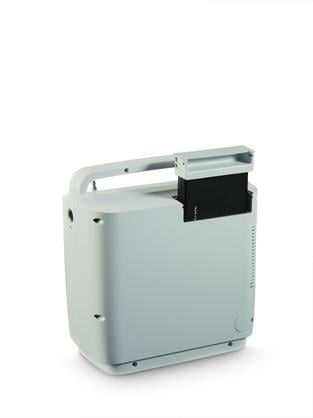
Read this blog linked in blue to learn about traveling with oxygen in 2021!
3 Year Warranty
Both devices and every new device LPT Medical sells comes with a 3 year warranty on the machine itself, and a 1 year warranty comes with all of the oxygen accessories!
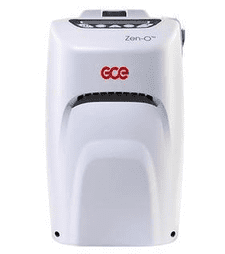
Both the GCE Zeno and the Respironics SimplyGo are super reliable oxygen machines, yet, things happen! Having a company like LPT Medical ready to assist you with any problem you have with your oxygen device, especially in the first three years, will come in handy!
Differences between the GCE Zeno and the SimplyGo
{{cta('43b79c5e-6bd6-4f02-ac27-2d038d20c146','justifycenter')}}
Weight and Size Differences
The SimplyGo is a lightest continuous flow oxygen device you can buy, it weighs just under 10 pounds, which is not a lot for continuous flow devices. It is also very compact and sleek. It is able to fit nicely under the seat in front of you while you fly or in the space by your feet in the car. It doesn’t take up much room in your home, and you will easily be capable of maneuvering the device around on the cart it comes with!
The Respironics SimplyGo’s dimensions are 10” H x 6” D x 11.5” W.
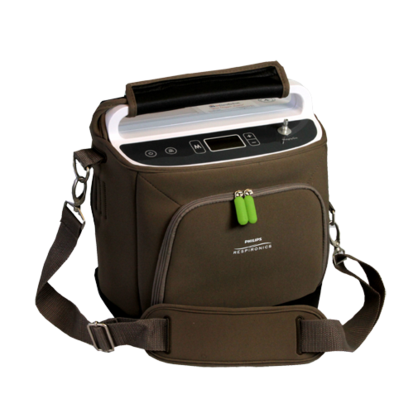
The GCE Zeno comes in a close second, and weighs 10 pounds, it is not a huge difference from the SimplyGo, but it is worth noting. The GCE Zeno stands at 12.3” H x 6.6” D x 8.3” W. So it is slightly taller than the SimplyGo yet it is not as wide!
Battery Life

The GCE Zeno shines bright with outstanding battery life, you can get up to 8 hours of battery life when the device is set to a pulse flow setting 2, and up to 1.5 Hours of battery life when it is set to continuous flow setting 2 LPM.
The Respironics SimplyGo is still known for being small but mighty, and it can operate for up to 6 Hours on a pulse flow setting of 2, and about 1.8 hours on a continuous flow setting of 2.
{{cta('b59df0c1-c4de-47a8-8e1c-0d33d4b414aa','justifycenter')}}
Keep in mind that you can use these devices while they are charging! So when you are resting at home, you can have the device plugged in and have it fully charged before you go to the grocery store, out to eat, or to run any errands.
Overview
Both of these devices will be able to give you the oxygen you need. However, depending on your lifestyle and other factors, one may be better for you than the other. Talk through this decision with an experienced respiratory specialist at LPT Medical, you can reach us at 1(800)-946-1201!
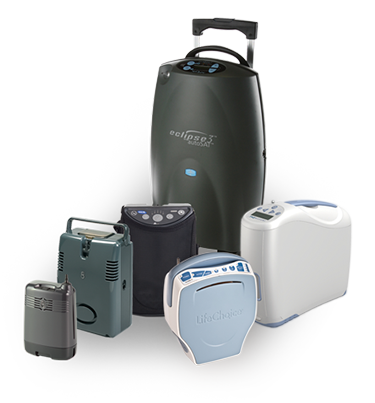
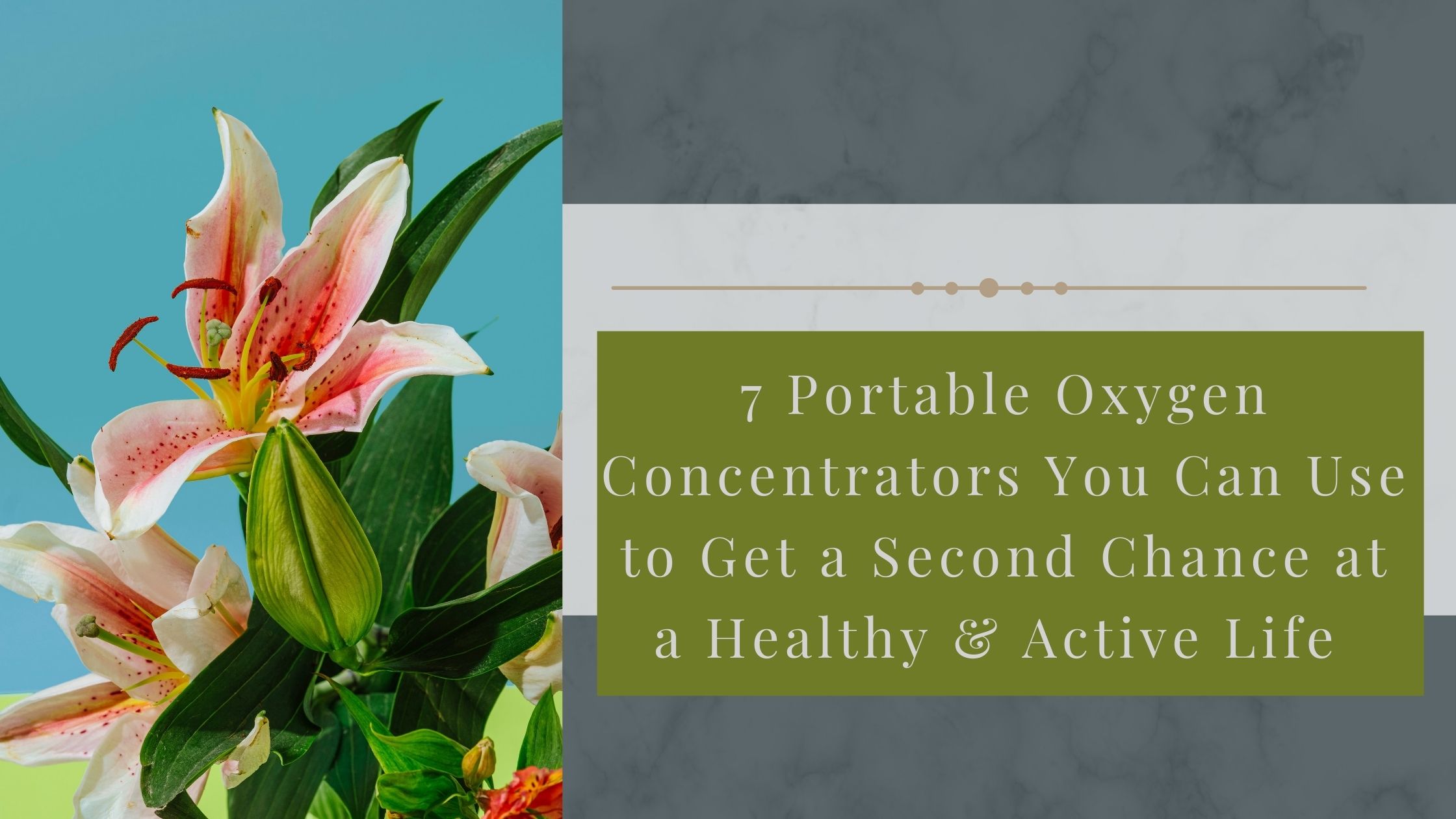
It is true that when people are diagnosed with chronic obstructive pulmonary disease (COPD) or any other chronic respiratory illness their lives change forever.
Even though you might feel physically the exact same way leaving the doctor's office that day as you did when you walked in, your mentality is noticeably different. After you are diagnosed with COPD or once you have reached a point in your diagnosis where you need to be out on oxygen you are given another chance.
{{cta('43b79c5e-6bd6-4f02-ac27-2d038d20c146','justifycenter')}}
It is not a death sentence, and it should not be treated as one. You can look at this moment as a second chance.
Now you know why you are coughing excessively, feeling tired, short of breath, moody and all of the things you were experiencing are due to something in your body that isn’t exactly right. And while that thing that isn’t exactly right is not curable, you can treat it and make it more manageable day to day.
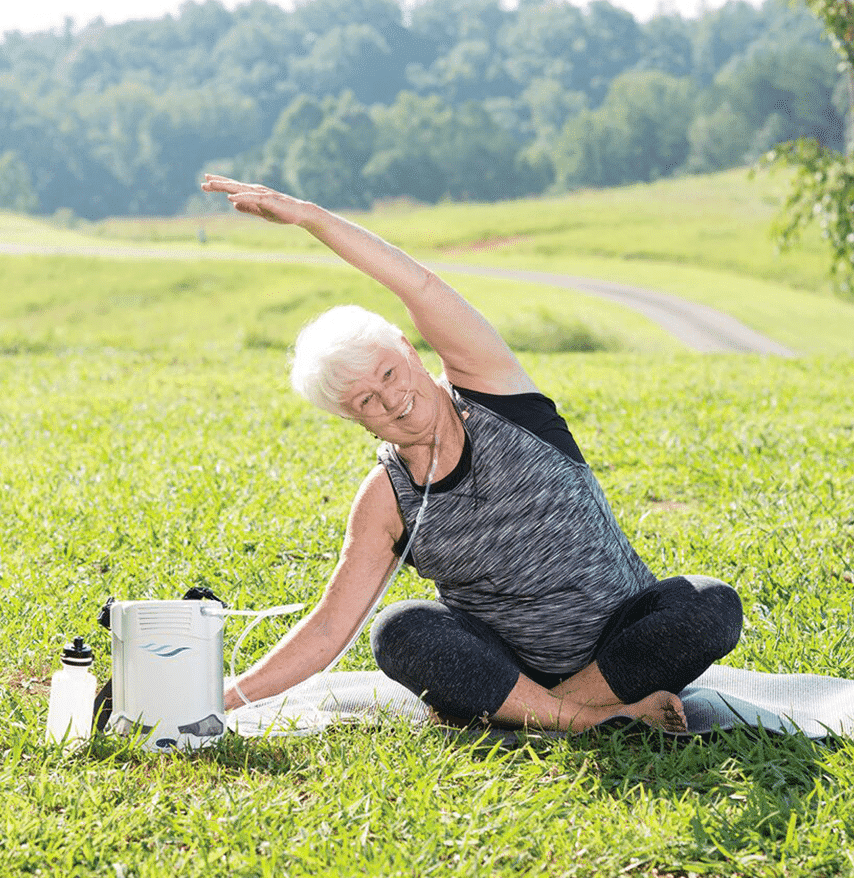
There are levels of severity of COPD that are broken down based on your lungs capacity and their ability to do their job! At a certain point in your diagnosis, there may come a time where you need extra help getting oxygen pumping through your body.
You will go through a series of tests that will display to you doctor whether or not you need supplemental oxygen therapy. As with any prescription drug, you will be prescribed medical oxygen, and within your prescription will be instructions on how much oxygen you need and when.
.jpg)
Supplemental oxygen therapy is designed to help you improve your lifestyle and quality of life. And similarly to prescription medication, too much is too much and too little isn’t enough, so be sure you follow your doctor's instructions when it comes to oxygen therapy.
This also means it's essential to have an oxygen therapy device that can handle your oxygen needs. You can either go with an oxygen tank or a portable oxygen concentrator (POC).
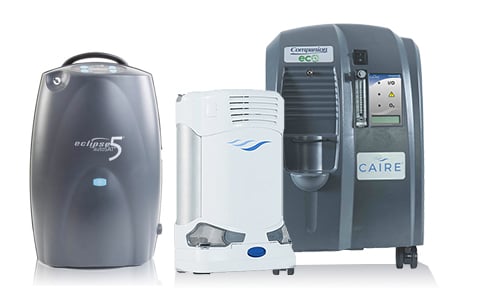
Both devices will give you oxygen, but one device is an older more traditional source of oxygen (tanks) while the other (POCs) is a newer more advanced device that has a number of qualities that make everyday life easier.
To learn more about you oxygen therapy options read this blog: Upgrading From an Oxygen Tank to the Respironics SimplyGo Portable Oxygen Concentrator
So let's get down to it… Once you get that oxygen therapy prescription, your oxygen therapy gives you another chance to treat your disease so it is more manageable and you symptoms are less intrusive.

Oxygen therapy is also the one treatment that has actually been proven to add years to your life, and not only time, but quality time where you can eat right, exercise, and sleep well (if you put in the work).
This is not to say that there will be hard days, COPD and respiratory illness across the board are no joke, and they affect millions of people across the world.
How Oxygen Therapy Can Save your Life
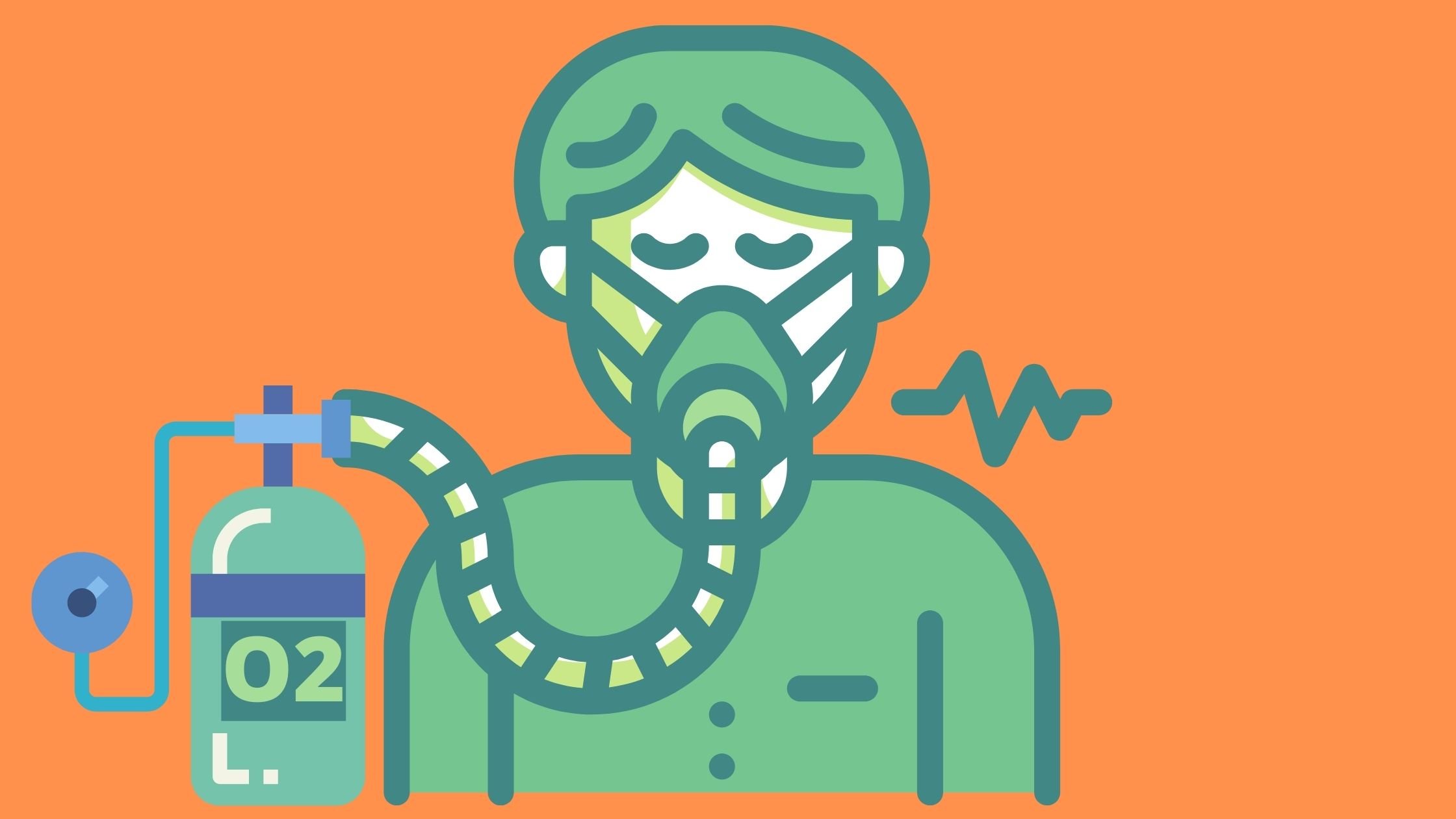
When you get on oxygen you will be sourcing your lungs with extra medical grade pure oxygen so that oxygen can move fluidly throughout your blood and muscles.
With the help of you oxygen therapy you will have an easier time getting to sleep and staying asleep. Exercise will come more easily because you won't fee las tired or short of breath. Oxygen therapy is giving you the tools to live an active and healthy life, so it is not not only extending your life but improving the quality of life you have.
Here are the 7 portable oxygen concentrators, and their most attractive features, that will help you live a long and healthy life.
Inogen One G4
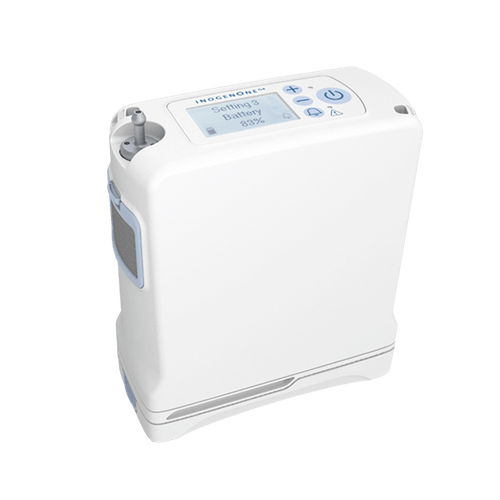
The Inogen One G4 is a pulse flow device, it only weighs 2.8 pounds, that's no more than a basic laptop computer.
Caire Freestyle Comfort
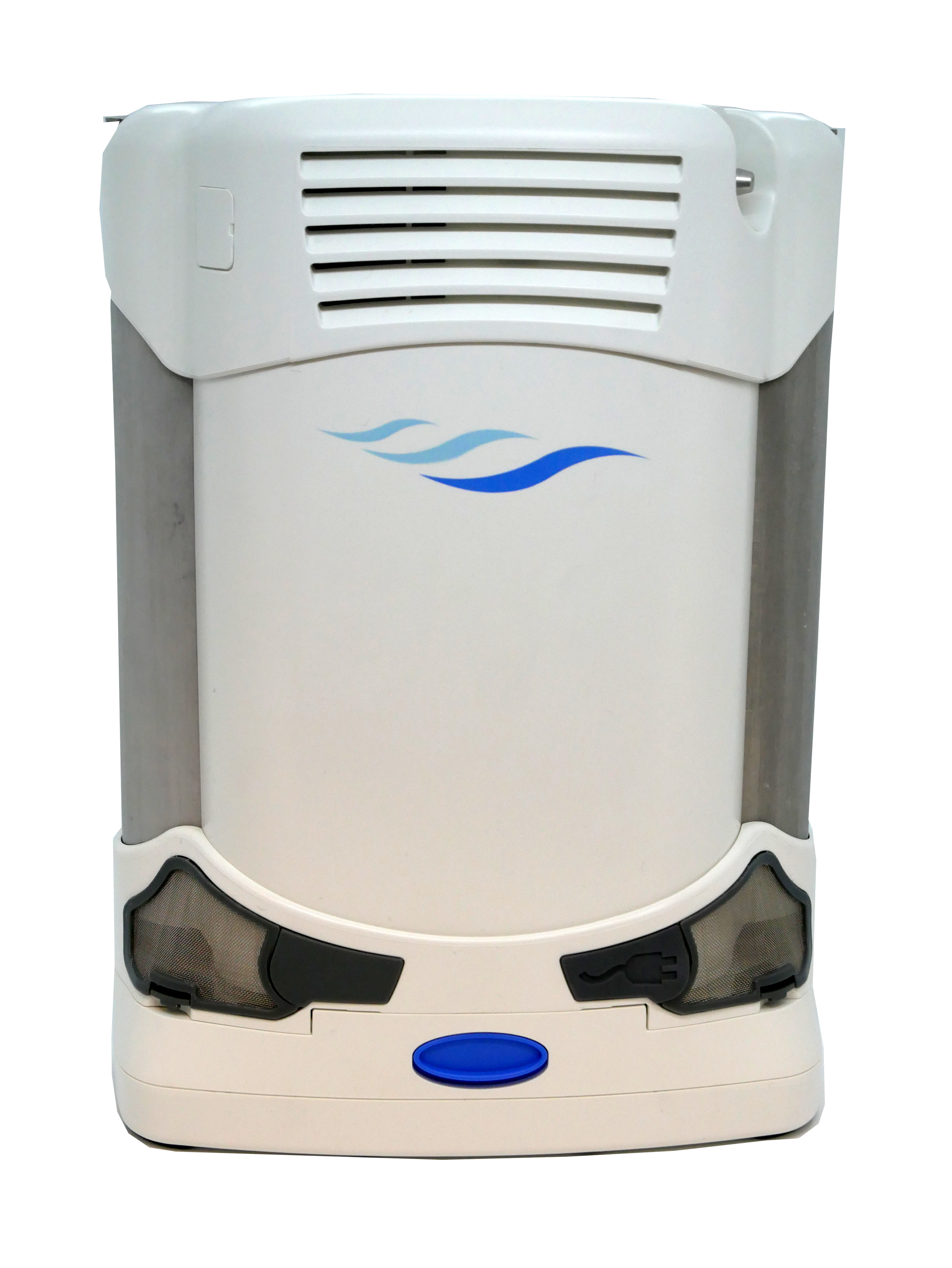
The Caire Freestyle Comfort is also a pulse flow device, it has a long lasting battery life. With the double battery installed it can last for up to 8 hours on a setting of 2 LMP.
Inogen One G5

The Inogen One G5 is the most popular pulse flow device on the market because it is so powerful. It can operate on any setting 1-6 LPM without sacrificing battery life.
Respironics SimplyGo

The Respironics SimplyGo is the lightest continuous flow portable oxygen concentrator. It weighs 10 pounds and can give off pulse or continuous oxygen depending on the setting you set it to.
Oxlife Freedom
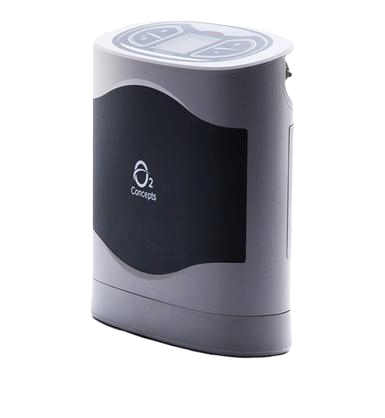
The Oxlife Freedom is a pulse flow device that is the first of its kind. It is equipped with tools to help oxygen patients and their healthcare providers better manage their respiratory conditions! The built in DNA or Dynamic Network Analysis is cutting edge technology that allows your healthcare provider to more closely monitor your oxygen use.
Oxlife Independence
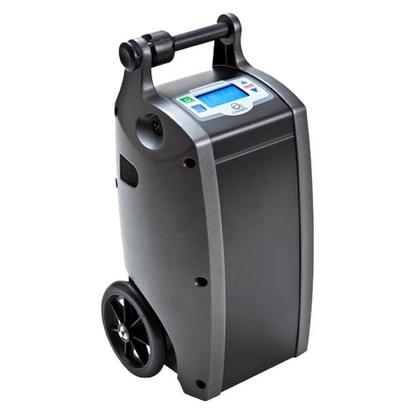
The Oxlife Independence portable oxygen concentrator is a continuous and pulse flow device is also the first of its kind. It is the world’s first “smart” portable oxygen concentrator. It is equipped with the same DNA technology inside the Oxlife Freedom which is powered by the Verizon network. The Oxlife Independence can monitor your usage and corresponding environmental conditions to adapt and proactively support your needs. It tracks vital data like hours used, breathing rate, ambulation, and more!
SeQual Eclipse 5
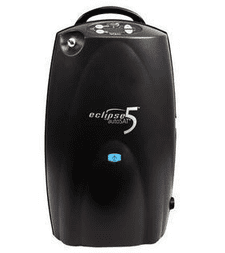
The SeQual Eclipse 5 is both a continuous and pulse flow device. It is known for offering the highest oxygen output on the market, gets good battery life, and it was also designed for the US Military.. It is one of the most popular continuous flow portable oxygen concentrators on the market because of its long-standing track record for being durable and reliable. If it’s good enough for the US Military, that should tell you something.
Staying On Track to Live A Healthy Life on Oxygen
If any of these portable oxygen concentrators are calling your name, simply call 1(800)-946-1201 to speak with an oxygen specialist about their other features and how it can fit into your life!
{{cta('fa8abc2a-1e88-4fa3-82fd-1cb5b9ed43b2','justifycenter')}}
Once you have an oxygen device that you trust you can start adjusting your lifestyle to a more positive and active one that cultivates more energy and happiness. We would like to leave you with some positive suggestions for everyday life that will make the challenges you face dealing with respiratory disease more manageable.
Keep a Journal
Keeping track of your oxygen levels, symptoms, triggers, and health related issues are valuable for you and your doctor. This can give your doctor an inside look at your life at home, and how your symptoms evolve and change so they can advise a course of action and treatment plan that works for you.
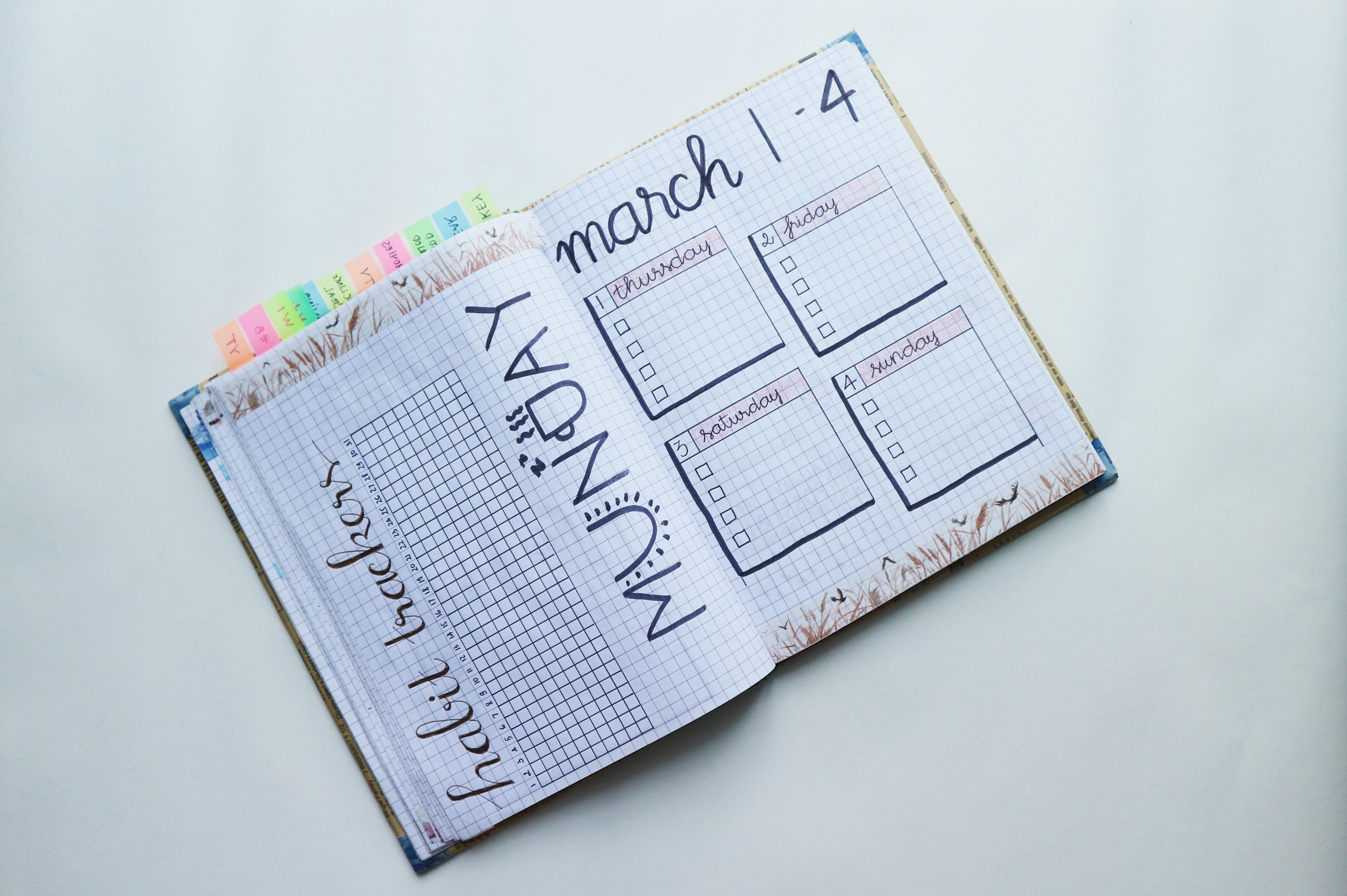
It is also valuable to jot down your emotions, to do lists, write down goals, and stories. Writing ignites a creative part of your brain, that like your muscles need exercise.
Even if you haven't written anything down for years, it is never too late to pick up a pen and paper and write down your struggles, achievements and everything in between.
You will be surprised how helpful it is to make decisions when you create a pros and cons list, or how writing down something that happened to you that day can enhance your memory.
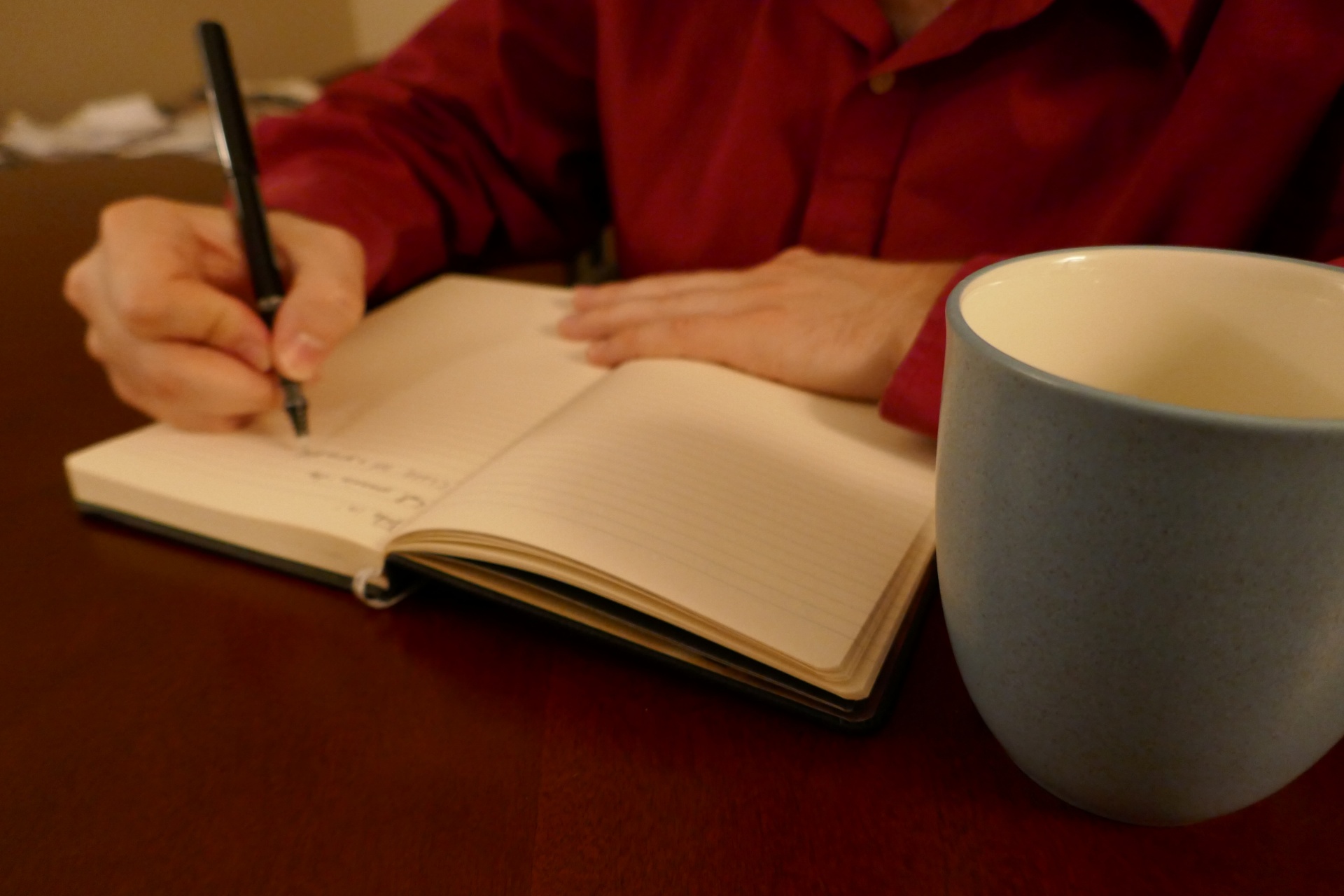
Exercise in the Water
We hear all the time that oxygen patients also require exercise as treatment. But for many, exercise can cause a lot of other issues throughout the body.
People with COPD may have muscle or bone conditions that make exercise painful and high impact workouts can be impossible. Water exercises give you the alternative for a less stress induced workout on the body.
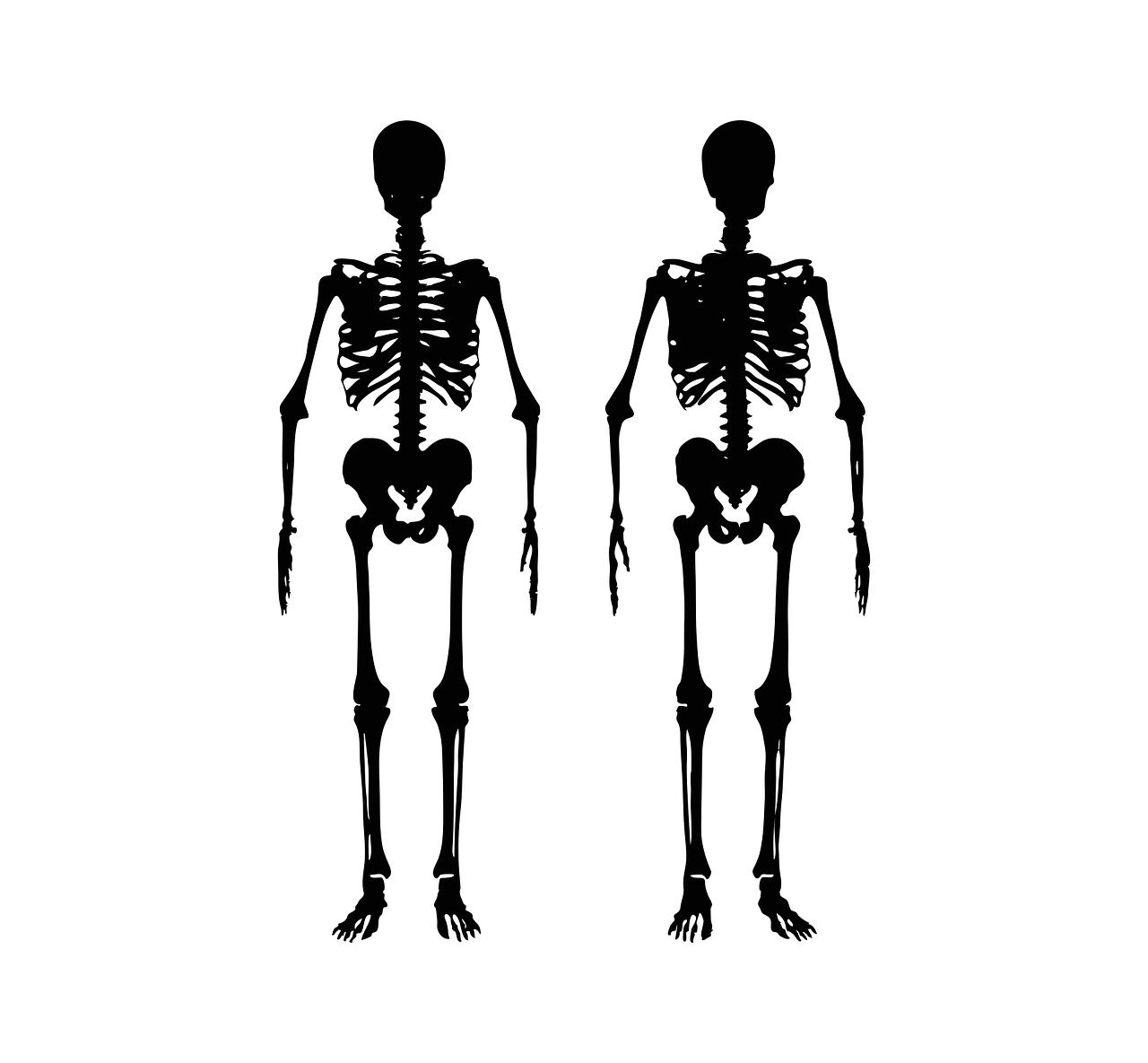
A 2013 study found that water-based exercises might increase a person’s exercise capacity and quality of life. In people with COPD and physical disabilities, water-based exercises were more effective than both land-based exercise and no exercise.
The researchers suggested that these effects might be due to the unique properties of water, which support body weight through buoyancy and provide resistance to increase exercise intensity
Breathing with Purpose to Avoid Excess Anxiety

Avoiding stress and anxiety are two big ones when it comes to easing COPD symptoms. Breathing can be directly related to relaxation or lack there of.
Anxiety will come up for the patient and caretakers for everyone with chronic illness. The very real stressors that come with chronic illness include medical emergencies, financial worries, everyday care issues.
So these stressors are unavoidable, and the emotional distress can trigger a physical reaction that may lead to you being hospitalized for exacerbated symptoms, known as a COPD flare up.
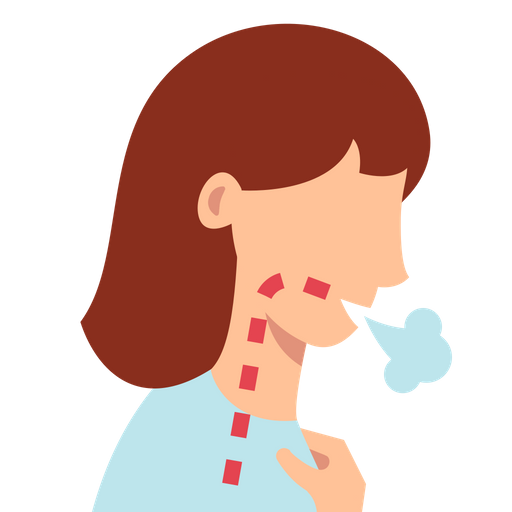
Naturally when humans feel afraid or upset, the heart rate, and blood pressure increase, this causes the breathing to speed up. Anxiety and fast breathing means more shortness of breath. For people with respiratory disease who already suffer from shortness of breath, this can generate even more anxiety, which causes further shortness of breath…It’s a toxic cycle.
So how can you and your caretaker help each other learn to relax in these moments? Try following three basic relaxation techniques from the Crossroads Hospice online resource center:

Take 10 minute to do each of the following breathing techniques:
- Deep breathing. Sit comfortably, feet on the floor. Put one hand on your chest, the other just under your ribs. Breathe slowly through your nose, counting to five. Only the hand at your belly should rise. Exhale slowly, counting to five. Repeat.
- Muscle relaxation. Lie down or sit comfortably. Starting with your toes, tense and relax your muscles, moving up your body to calves, thighs, etc. Count to five while tensing and to 30 while relaxing. Notice the difference between tense and relaxed.
- Visualization. In a quiet place, lie down or sit comfortably. Imagine yourself at your favorite place of tranquility (beach, mountains, etc.). Bring in as many elements of the place as you can: what you would be seeing, smelling, hearing, touching.
Managing Fatigue Effectively
![]()
It's common for COPD patients and oxygen users to “run out of gas” even when doing simple things around the house.
You can learn to conserve energy—The energy that keeps you awake and moving around—so you are able to enjoy activities and exercise that you love to do for longer.
Try getting into the rhythm of this simple strategy- Understand that you have a limited amount of energy each day. If you’re mindful of how you use that energy by creating a daily routine, for chorus, everyday necessities, any medical treatment, and exercise and life’s pleasures.
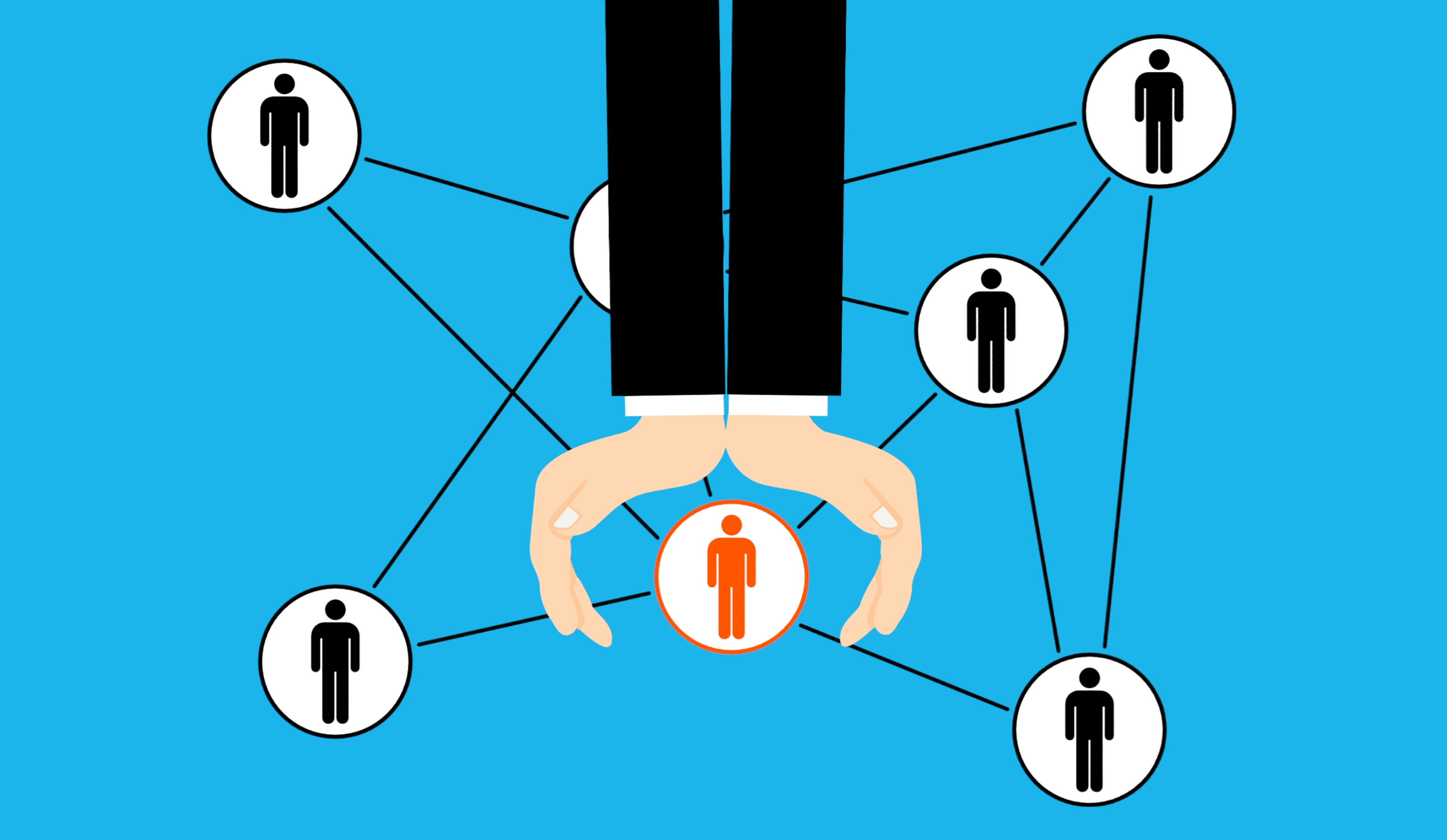
Plan out your days with the pace for each activity. Keep these tactics in mind:
- DON’T rush, allow plenty time for what needs to get done.
- Alternate activity with rest.
- Divide large chores into smaller tasks spread across the day or week.
- Work smarter by minimizing trips up/down stairs, shopping with a list and in as few stores as possible, cook in bulk and freeze the leftovers, after bathing, rest in a terrycloth bathrobe instead of drying with a towel. These little things conserve a lot of energy over time.
- Don’t be afraid to ask for help when you need it. You can order your medications and groceries to be delivered.Throughout the day, look for opportunities to sit down, and minimize time walking, lifting, and bending (use extensions bending and reaching).
- Sit down while cooking, cleaning, bathing, dressing, or grooming face and hair, have a stool or seat handy in multiple rooms of your house.
- Stay organized and lay out supplies at waist height so everything is within easy reach before you start cooking, cleaning, bathing, or dressing.
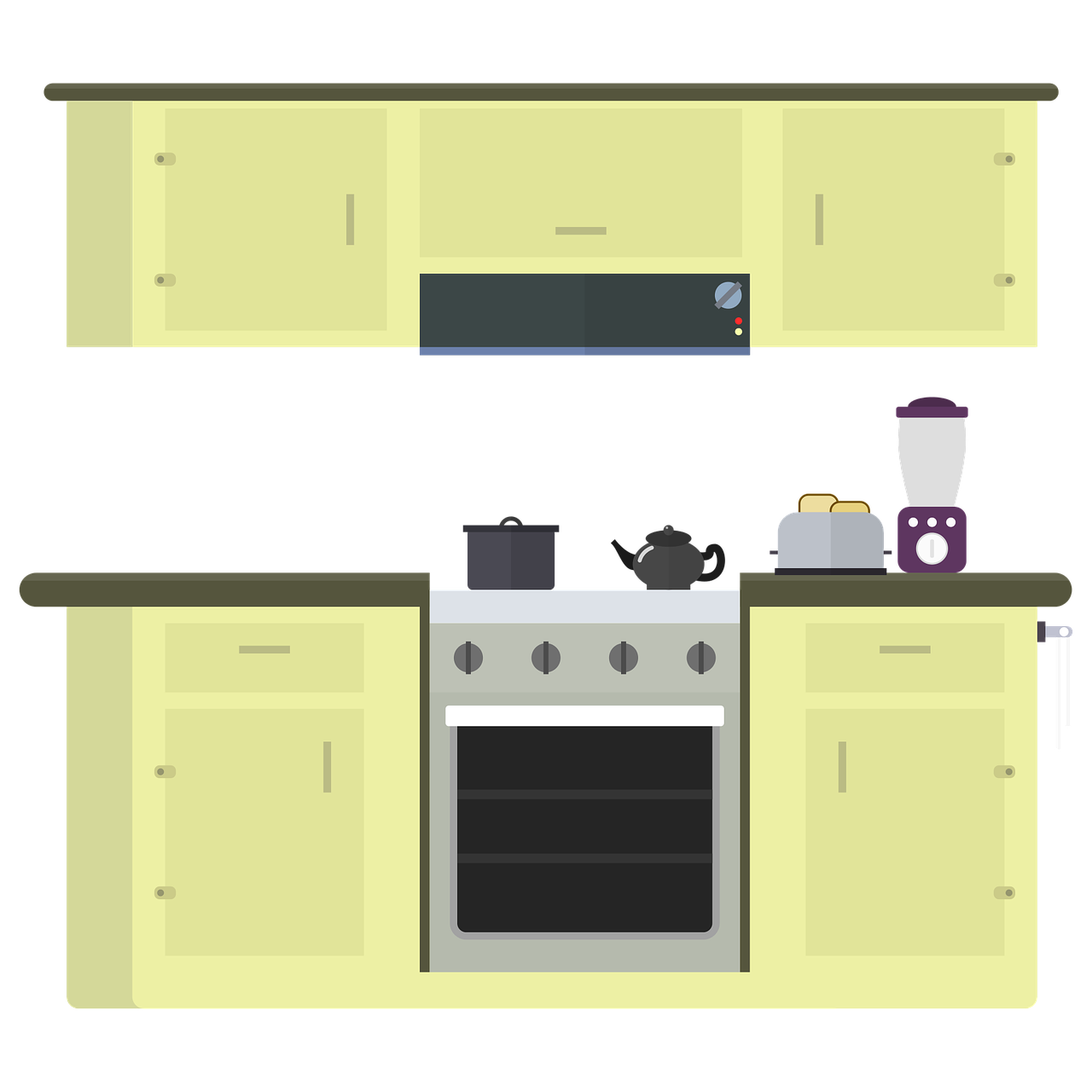
- Use an elevated toilet seat, a grabber for objects, and elongated handles on shoe horns, brushes, and dustpans.
By learning how to operate at a mild pace with lots of helpful tools throughout your house, daily life gets easier and easier, and your tank of energy will get you further and further the more you conserve energy.
Overview
Of course, none of these simple everyday changes listed above will make much of a difference if you are lugging around a heavy oxygen tank, or are stressed and worried about getting your next oxygen delivery.
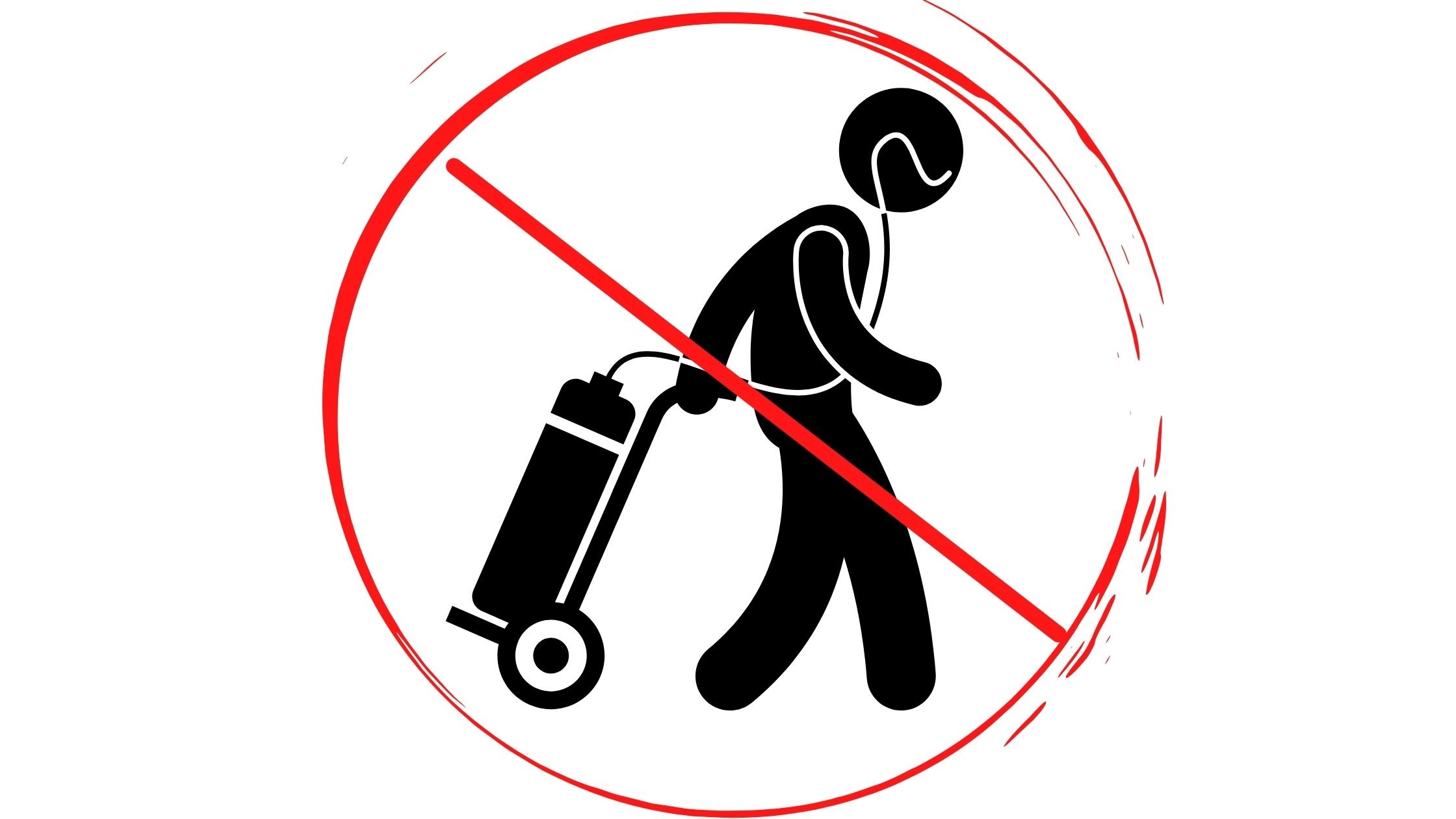
First step to getting your second chance at a healthy and active life after being prescribed oxygen, is getting an oxygen device that can help you through life, rather than holds you back.
Talk to your doctor about your oxygen device options and how your prescription will work day to day, and then call us at LPT Medical at 1(800)-946-1201 so we can help you find a device that fits your needs and lifestyle.
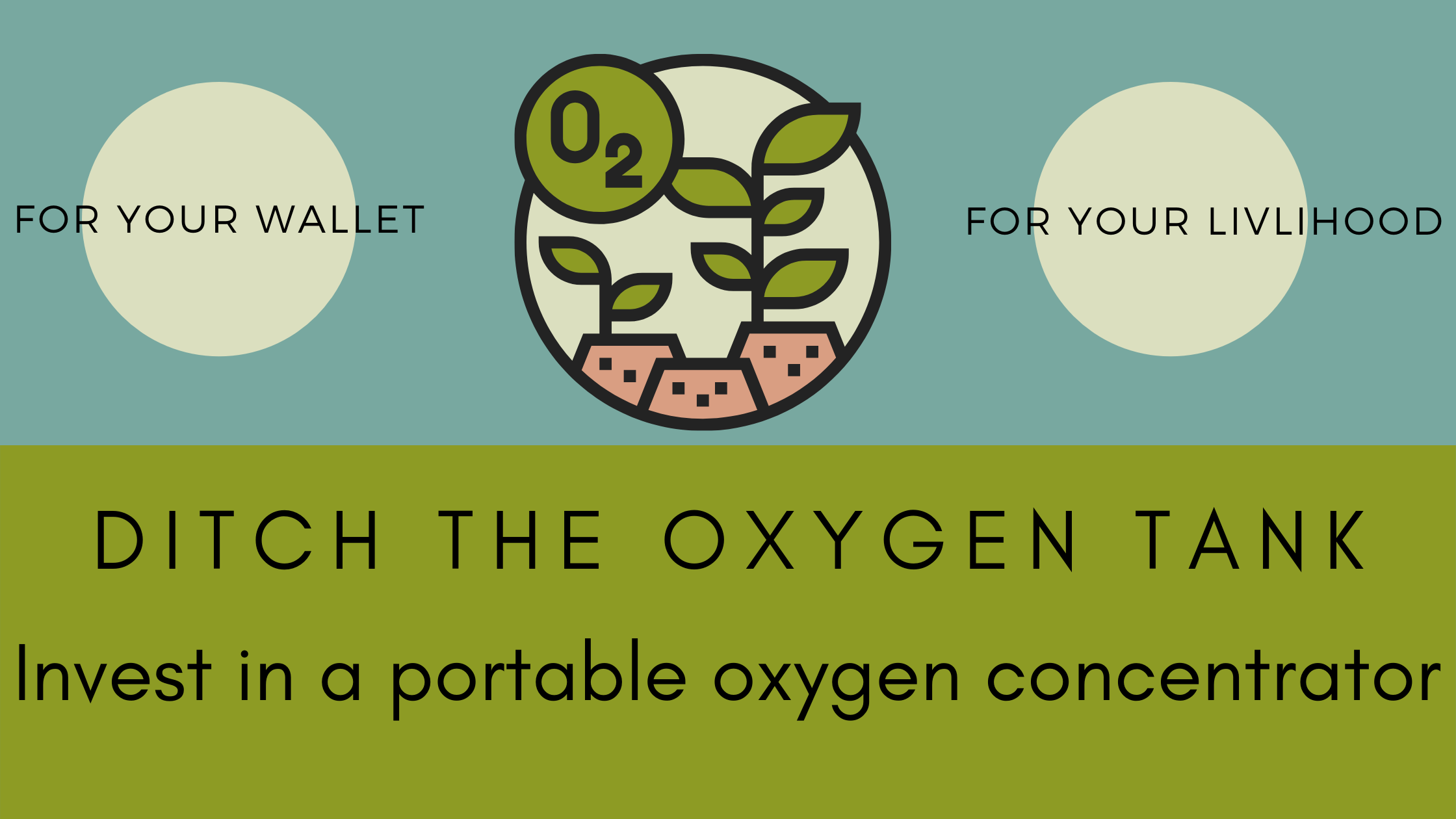
It's hard to imagine the feeling of being breathless until you’ve experienced it yourself. Your lungs gasping for breath, and unable to prepare proper blood oxygen levels is not only uncomfortable, but unbearable and terrifying.
Chronic respiratory conditions that inhabit normal breathing capacity in your lungs is one of the many ways people experience breathlessness on a day-to-day basis. These conditions include COPD, pulmonary fibrosis, severe asthma attack, pneumonia, pneumothorax (collapsed lung), and sleep apnea.
On their own, COPD and obstructive sleep apnea contribute to tens of thousands of American deaths every year, and still the two conditions can occur together and cases where they overlap have increasingly harmful effects on the health of patients.
There are a number of ways to treat COPD and sleep apnea, but one method that has been proven to prolong life and increase the quality of life is utilizing oxygen therapy. Oxygen therapy is something that your physician will generally prescribe to you. It is supplemental oxygen you can use at home everyday.
Whether you use oxygen-gas cylinders, liquid-oxygen devices, or an oxygen concentrator you will find that after getting used to using your device, that you can finally breathe at normal rates and enough oxygen can enter your lungs.
By utilizing oxygen therapy you will experience less shortness of breath doing everyday activities such as walking up and down the stairs, gardening, and cooking. As a result, you will be encouraged to try new things like going to pulmonary rehab classes, and exercising more consistently. Additional activity throughout your daily life will encourage better self-management of COPD and symptoms and improve your quality of life.

But the question remains: What method of supplemental oxygen is the most effective? And which device is right for your lifestyle and oxygen requirements?
If you enjoy being capable of getting around more independently, traveling long distances, going on vacations, and if you are a relatively active person who enjoys physical activities and exercise, an oxygen tank is not the best option for you.
An oxygen tank will limit your ability to accomplish all of those things. On the other hand, a portable oxygen concentrator will open up opportunities and give you the portability you are looking for in order to be more active, travel more, and give you reassurance to be more independent managing your COPD or other respiratory condition.
Here are the reasons you should invest in switching from an oxygen tank to a portable oxygen concentrator or if you are in the market for the first time for an oxygen therapy method.
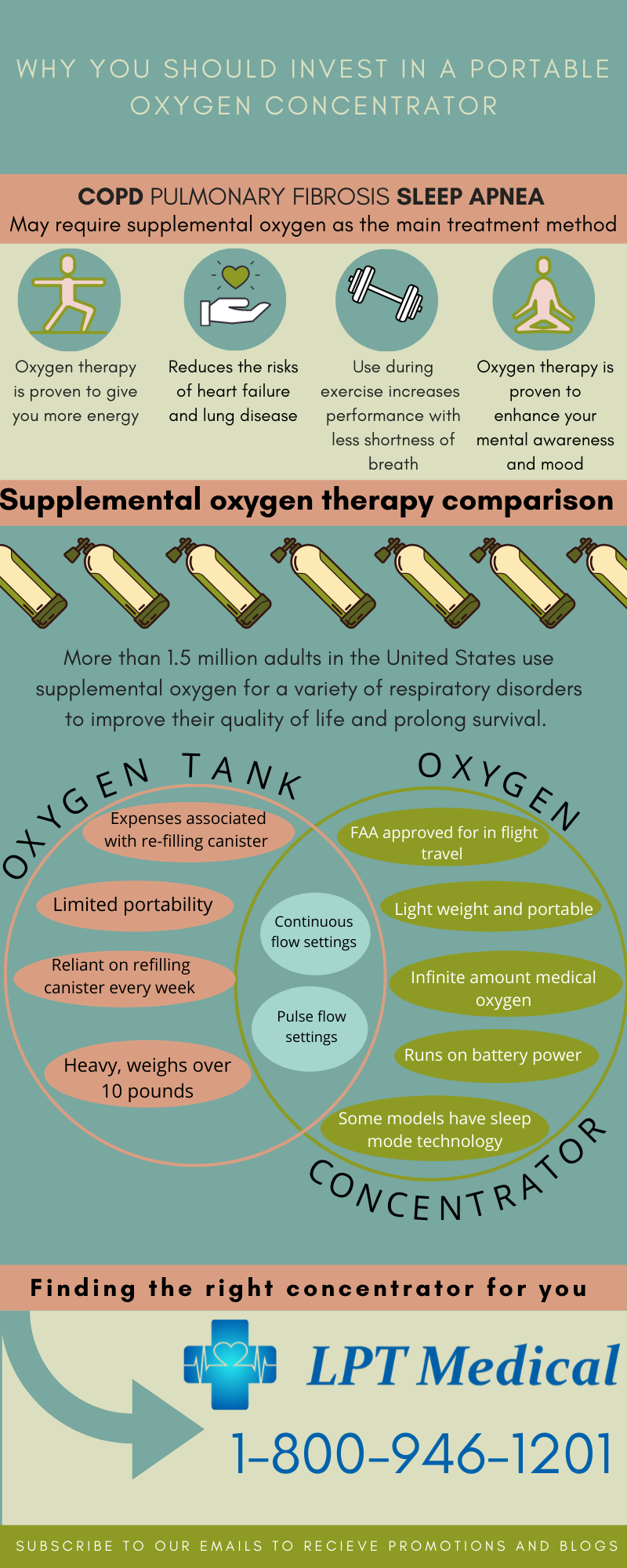
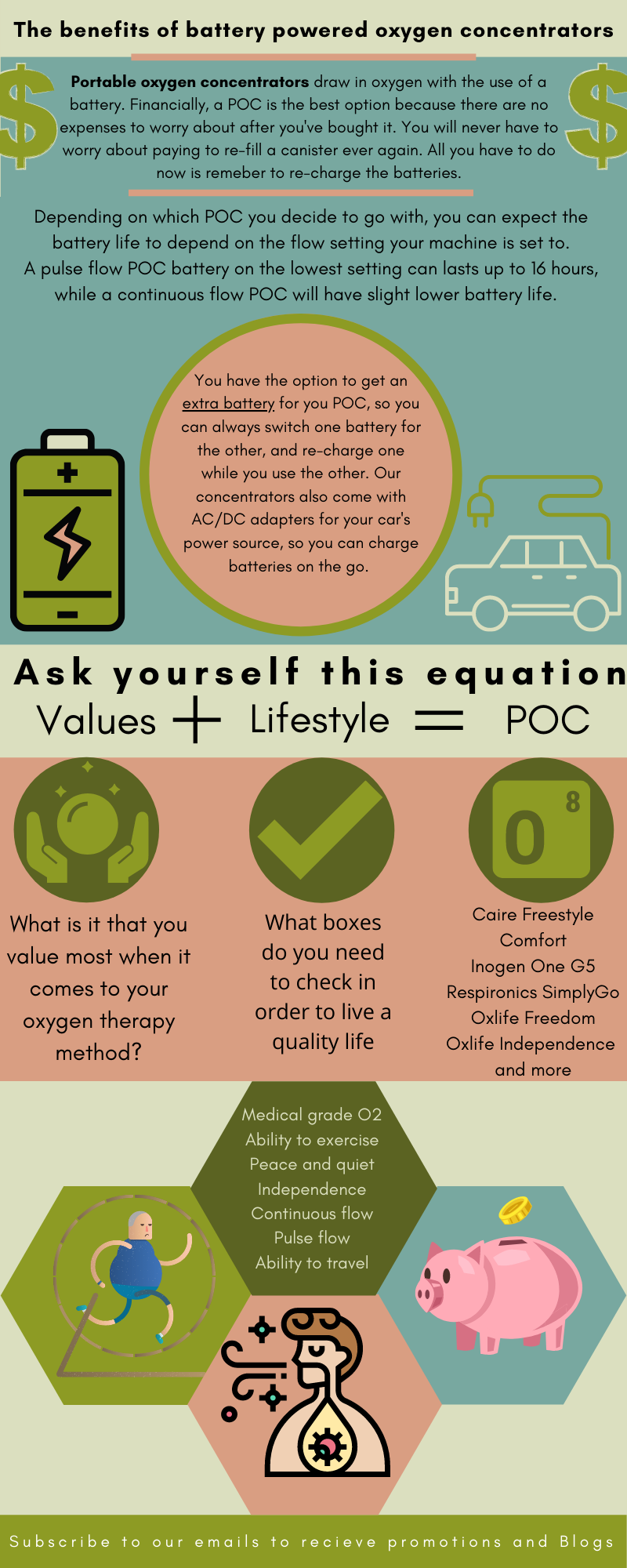 {{cta('fa8abc2a-1e88-4fa3-82fd-1cb5b9ed43b2','justifycenter')}}
{{cta('fa8abc2a-1e88-4fa3-82fd-1cb5b9ed43b2','justifycenter')}}
An oxygen concentrator is an electronic device that draws in ambient air and uses it to administer medical-grade oxygen through a nasal cannula. There are three different types of concentrators including stationary oxygen concentrators, portable continuous flow concentrators, and portable pulse dose concentrators. While each of these operates using the same basic principles, there are some key differences between the benefits that they offer to the user. If you’d like information on this subject, please visit our blog post titled, “Pulse Dose vs. Continuous Flow Oxygen Concentrators: The Ultimate Comparison Guide.”
{{cta('fa8abc2a-1e88-4fa3-82fd-1cb5b9ed43b2','justifycenter')}}
In this post, however, we’re going to take a look at one oxygen concentrator in particular: the Respironics SimplyGo. This machine has been out for quite some time, yet it’s still considered by many as the “gold standard” for continuous flow portable oxygen concentrators. Read on to learn about what sets the Respironics SimplyGo apart from other concentrators and watch the video above for a full hands-on unboxing of this device. If you’re on the market for an oxygen concentrator but don’t know where to begin, reach out to our oxygen concentrator specialists by phone or email.
The Lightest Continuous Flow Portable Oxygen Concentrator
Simply put, a continuous flow oxygen concentrator is a device that puts out a constant stream of oxygen. This is similar to an oxygen tank where if you loosen the nozzle, you’ll receive a constant flow of oxygen until the oxygen in the tank is depleted. But a continuous flow concentrator will administer oxygen until it runs out of battery life. If you keep it plugged into a wall outlet, you’ll be able to run it 24/7 without interruption.

Despite how old the Respironics SImplyGo is, it’s still the smallest and the lightest continuous flow portable oxygen concentrator on the market. The dimensions of the SimplyGo are 10” H x 6” D x 11.5” W and it weighs in at only 10 pounds. In other words, it’s one of the only continuous flow devices that’s light enough and compact enough to carry comfortably on your shoulder. Regardless, every SimplyGo unit comes equipped with a rolling cart for your convenience.
Something you’ll likely notice right away about the Respironics SimplyGo is that it has a carrying handle built into the top of the unit. This is a simple design choice but it’s not offered with many other oxygen concentrators. This handle makes it much easier to pick the device up and move it around without having to grab it from the bottom or the sides where you risk dropping it.

The form factor is another thing that should be noted about the Respironics SImplyGo. Most continuous flow portable oxygen concentrators use the term “portable” very loosely in that they’re still about as bulky and awkward to maneuver as a standard oxygen tank. Most people find that they need help from loved ones in order to move their concentrator around safely. However, with the SimplyGo, you’ll have no problems on your own. The rolling cart has an adjustable handle making it easy to store whether you’re at home, in your car, or on an airplane.
Power and Versatility On The Go
One of the biggest problems oxygen manufacturers have faced is creating a small, lightweight oxygen device that also meets the needs of oxygen patients around the world. Every oxygen user is different, so it’s important to make oxygen machines that are versatile enough to satisfy everyone’s wants and needs. Luckily, the Respironics SimplyGo provides more versatility than most portable oxygen concentrators out there.

Firstly, the SimplyGo offers both continuous flow and pulse dose options. On continuous flow, you’ll have between 0.5 to 2.0 liters of oxygen per minute (LPM) and on pulse dose, you’ll have 6 flow settings to choose from. In other words, you’ll have a lot of different options for how you want your oxygen delivered. For example, if you’re at home with your concentrator plugged into the wall, you might want to use the continuous flow setting which consumes more battery life. However, when you leave the house and you’re trying to conserve battery life, you might choose to use the pulse dose setting.
Before you make any changes to your oxygen delivery, you should first contact your doctor. Everyone’s needs are different, so receiving too much or too little oxygen may be harmful to your health. Be sure to ask your doctor how many liters of oxygen per minute you need as well as how long you should be on oxygen each day. If you enjoy exercising, also ask him/her if it’s okay to increase your oxygen intake while exercising.
Another thing that makes the SimplyGo so versatile is the fact that it can operate using either one or two batteries. If you know that you’re only going to be out of the house for an hour or two you can simply take one battery with you as opposed to two. This will help you cut down the weight of your device and make your life a little easier. If you’re going on a long trip, add the other battery into your device and you’ll have twice as much battery life to work with.

Unlike other concentrators which have their battery packs on the bottom of the unit, the SimplyGo batteries slide out of the top of the unit. This makes it incredibly easy to swap out your batteries on the fly without having to flip the device over or lay it on its side. It’s also less of a hassle because you won’t have to take the device off of your shoulder when you do it.
Fully CPAP and BiPAP Compatible
Many people are unaware that you’re actually able to use your Respironics SimplyGo in conjunction with your positive airway pressure device (PAP device) as you sleep. PAP devices are used by people with obstructive sleep apnea (OSA) who have problems with their airways closing up as they sleep. This can be very dangerous when it’s combined with the side-effects of COPD and other respiratory conditions so you should speak with your doctor to see if you should use both CPAP and oxygen therapy while you sleep.
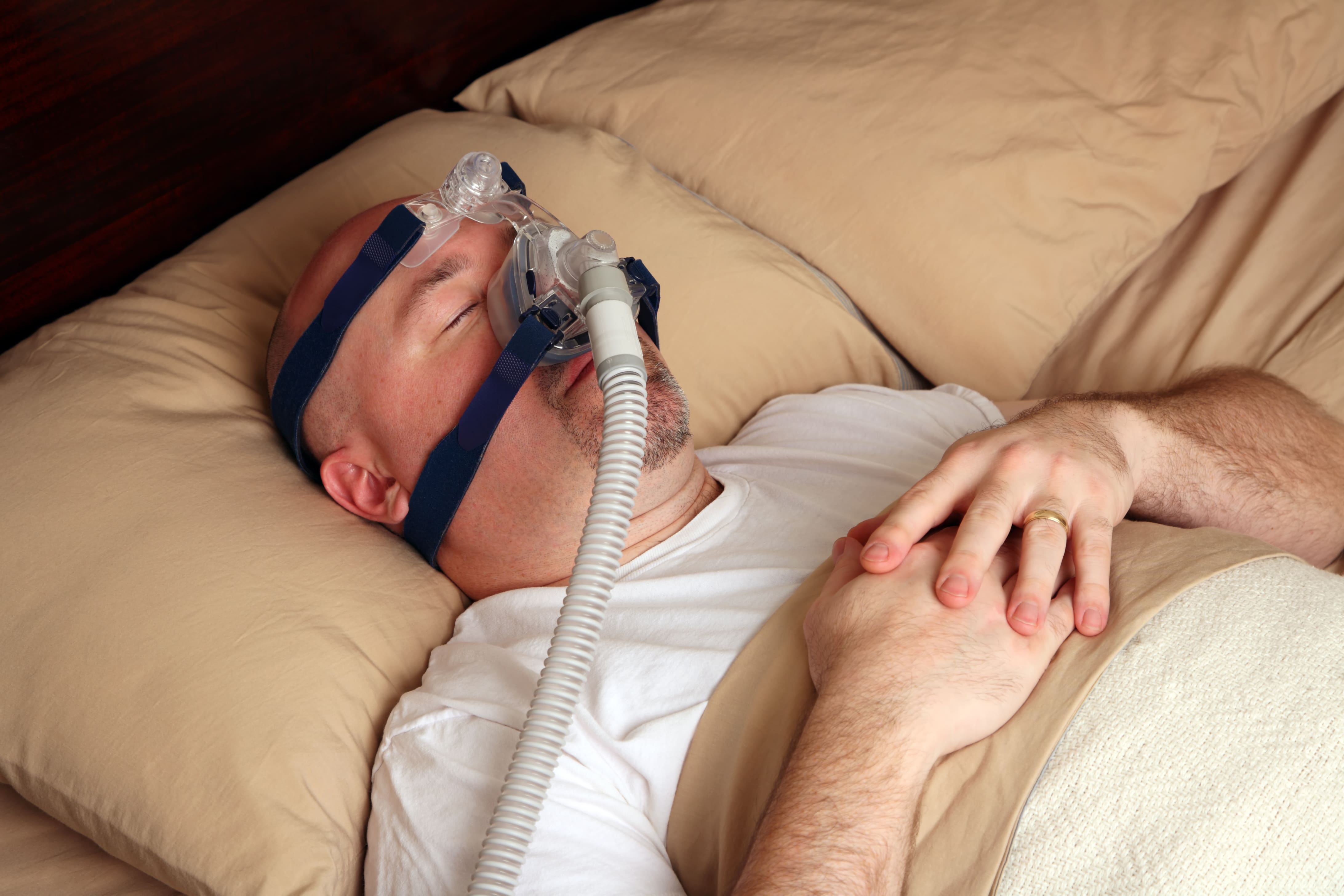
Unfortunately, pulse dose oxygen concentrators like the ResMed Mobi or the Activox 4L cannot be used with CPAP devices. This is because they rely on slight changes of pressure in the nasal cannula in order to determine when to deliver oxygen. The CPAP device can interfere with this, so you’ll need to use a continuous flow device like the Respironics SimplyGo. Since the SImplyGo has a pulse dose option, you’ll just want to make sure it’s set to continuous flow before you go to bed. For more information on setting up your SimplyGo with CPAP, be sure to consult the user manual.
Conclusion
There’s a reason we recommend the Respironics SimplyGo to oxygen patients time and time again. It’s the smallest and lightest continuous flow oxygen concentrator on the market and offers plenty of power and versatility that people expect in this day and age. With the SimplyGo, you’ll be able to regain the freedom that you once had before starting oxygen therapy and finally start enjoying activities outside of the house whether it’s taking a walk or taking a trip across the world.
{{cta('b59df0c1-c4de-47a8-8e1c-0d33d4b414aa','justifycenter')}}
While the Respironics SimplyGo is an incredible oxygen device, we want to get you the exact device that matches your wants and needs. If you’re shopping for a new, used, or refurbished oxygen concentrator, reach out to our concentrator specialists, and we will walk you through the whole process from choosing a concentrator to receiving your medical paperwork and even receiving financial compensation through Medicare or another health insurance company. Give us a call or shoot us an email today to get started!
Respironics SimplyGo Specs:
|
Weight |
10 Pounds |
|
Dimensions |
10” H x 11.5” W x 6” D |
|
Flow Rate |
Continuous Flow 0.5-2.0 LPM Pulse Flow Settings 1-5 |
|
Battery Life |
Continuous Flow Up To 0.9 Hours Pulse Flow Up To 3.0 Hours |
|
Power |
100-240 VAC, 50/60 Hz; 19 VDC |
|
FAA Approved |
Yes |
|
Warranty |
3 Years |
Respironics SimplyGo Battery Life:
| Flow Rate | Continuous Flow Battery Life | Pulse Flow Battery Life |
| 0.5 | Up to 2.9 Hours | N/A |
| 1 | Up to 1.6 Hours | Up to 3.4 Hours |
| 2 | Up to 0.9 Hours | Up to 3.0 Hours |
| 3 | N/A | Up to 2.2 Hours |
| 4 | N/A | Up to 1.7 Hours |
| 5 & 6 | N/A | Up to 1.3 Hours |
.png)
With around 65 million patients worldwide, chronic obstructive pulmonary disease (COPD) is anything but uncommon. In fact, it’s one of the most prevalent lung conditions in the world behind asthma. However, despite these statistics, COPD is labeled an “invisible illness.” Many people suffer with this condition in silence, and society as a whole tends to stigmatize it by misunderstanding what its causes are and what life is like with this condition.
In previous blog posts, we’ve talked about how the Caire FreeStyle Comfort portable oxygen concentrator is breaking down barriers when it comes to the way people see COPD patients. Instead of having to struggle with heavy and bulky oxygen tanks, COPD patients are now able to get out of the house with ease, travel the world, and keep up with all of their friends and family. Caire FreeStyle Comfort users often attribute these things to the device's small form factor, lightweight design, and sleek indiscreet look.
If you want to learn more about the specifications of the Caire FreeStyle Comfort, feel free to visit this page and if you’d like to learn about the top benefits, please visit this page. In the meantime, however, we’re going to be taking a look at all of the accessories currently available for the Caire FreeStyle Comfort. We’ll link out to each accessory so that you can learn more about them and purchase one for an affordable price. And as always, if you have any questions, don’t hesitate to leave them in the comment section below so we can get back to you or refer you to one of our oxygen concentrator specialists.
Caire FreeStyle Comfort Carry Case
The first thing you need to decide when you purchase a portable oxygen concentrator is how you will carry it. You won’t be making full use of your concentrator if you aren’t getting out of the house and enjoying your newfound freedom, and you won’t be enjoying it to the fullest unless you’re using a carrying case that suits your lifestyle. One of the carrying cases we recommend for the FreeStyle Comfort is the custom carry case.

The FreeStyle Comfort carry case is designed to be simple and easy to use. It’s a thin cloth case that slips onto the bottom of your device. The top of your POC including the control panel will be accessible so you can easily make adjustments to your flow rate, check your battery life, and view any alerts on the screen. The device is held snugly in place so you won’t have to worry about it wobbling around or falling out while you’re walking. It also has an adjustable padded shoulder strap so you can find a length that’s comfortable for you.
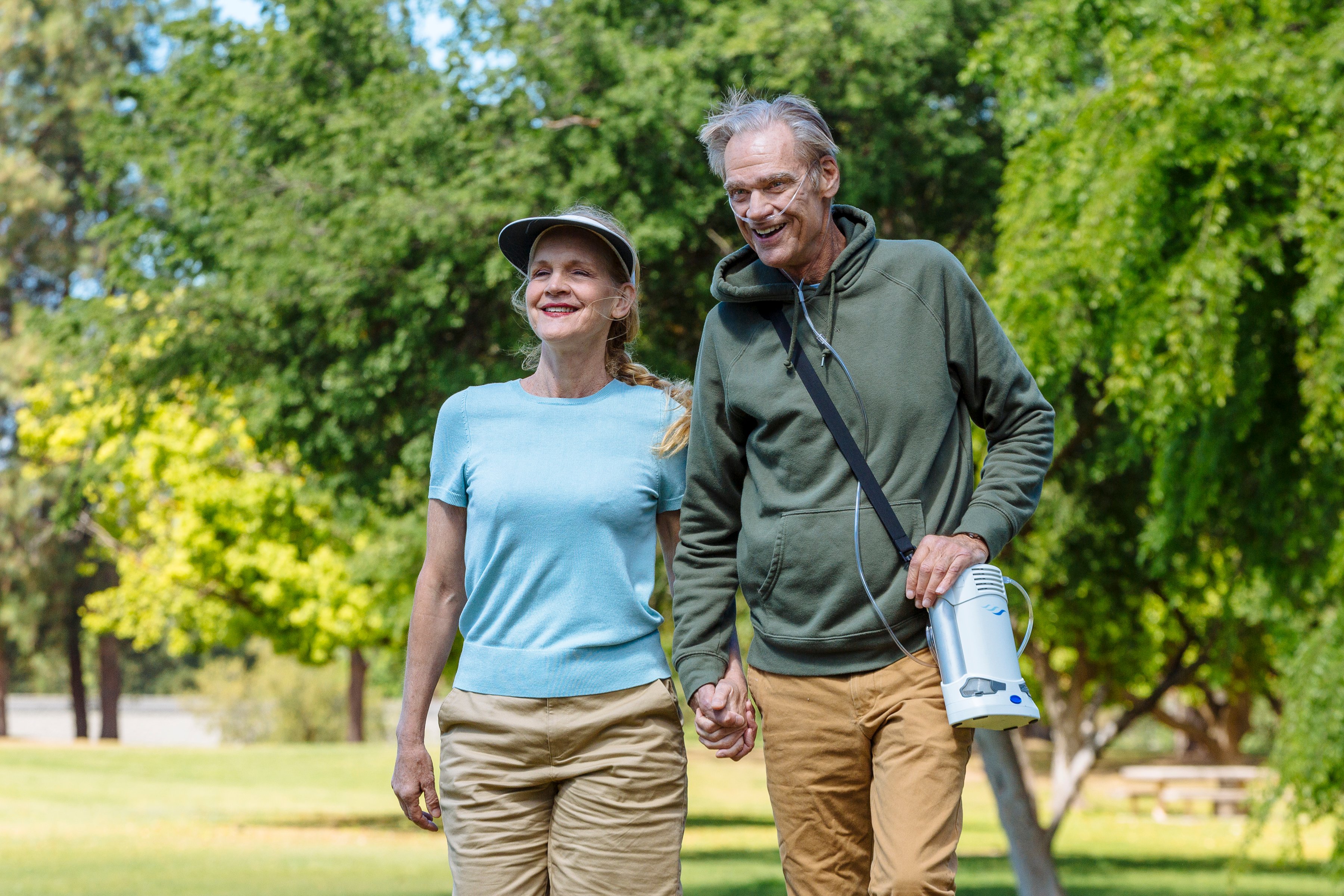
This carrying case is perfect for anyone who wants to get out of the house and visit a friend, take a walk, or go to the grocery store. It’s best for anyone who prefers something sleek and easy to use as opposed to something with a lot of bells and whistles or unnecessary carrying space. While the Caire FreeStyle Comfort package already comes with this case, you can always buy one separately if yours is lost or stolen.
Caire FreeStyle Comfort Backpack
It’s not uncommon for people with COPD to experience back, shoulder, or neck pain, weakness, or fatigue. Most COPD patients are older adults and meaning COPD patients are far more likely to experience these issues than the general population. We wrote a great article about coping with this type of pain, so be sure to check it out if you’re interested. In terms of portable oxygen, however, many people are unable to carry it over one shoulder like the custom carrying case is designed for.
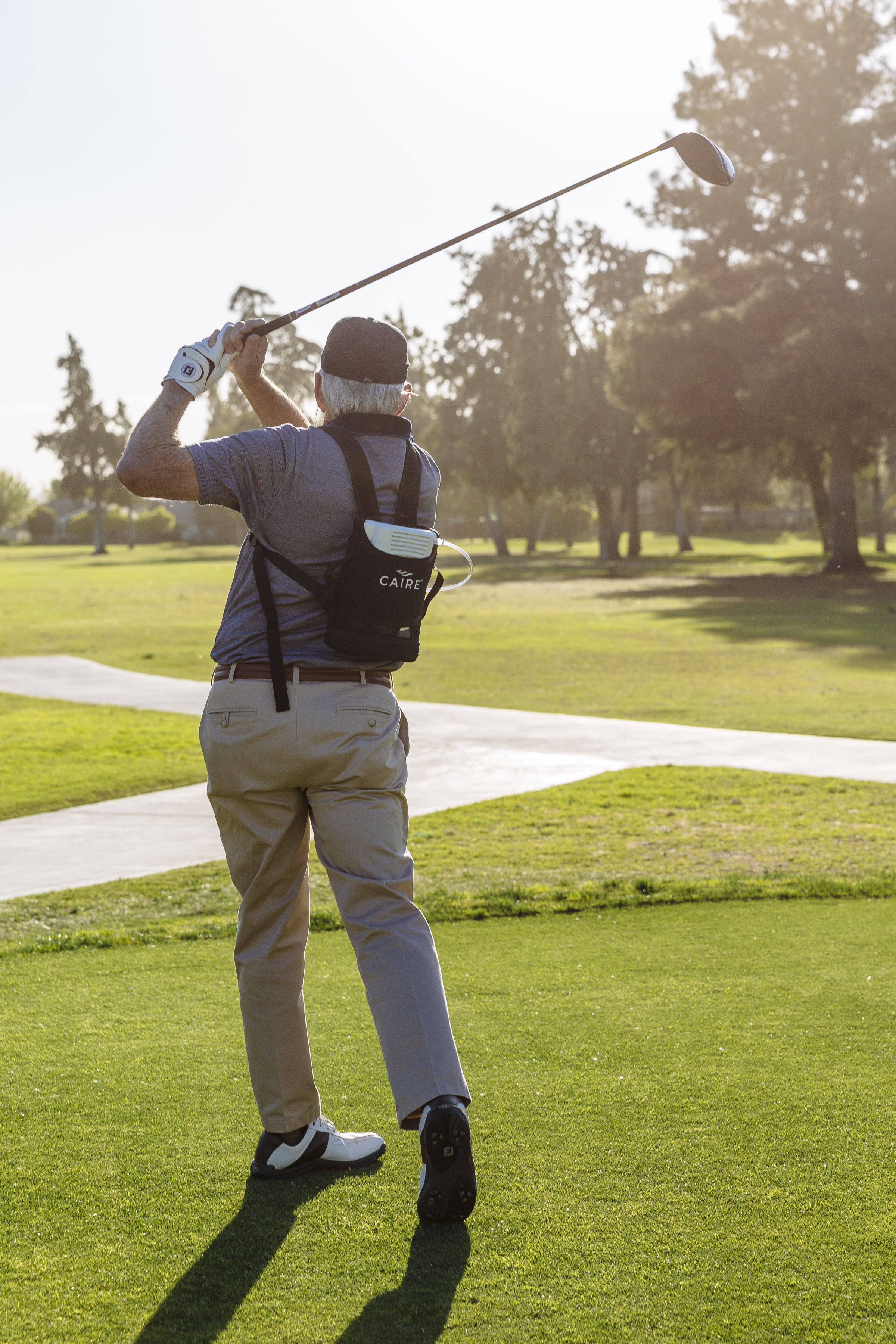
The Caire FreeStyle Comfort backpack is designed for people who want to limit the amount of weight distributed to each shoulder so that you don’t experience any chronic pain. Unlike the backpack for the Inogen One G5 which has lots of carrying space, the FreeStyle Comfort one is relatively minimalistic allowing you to limit your carrying weight as much as possible.
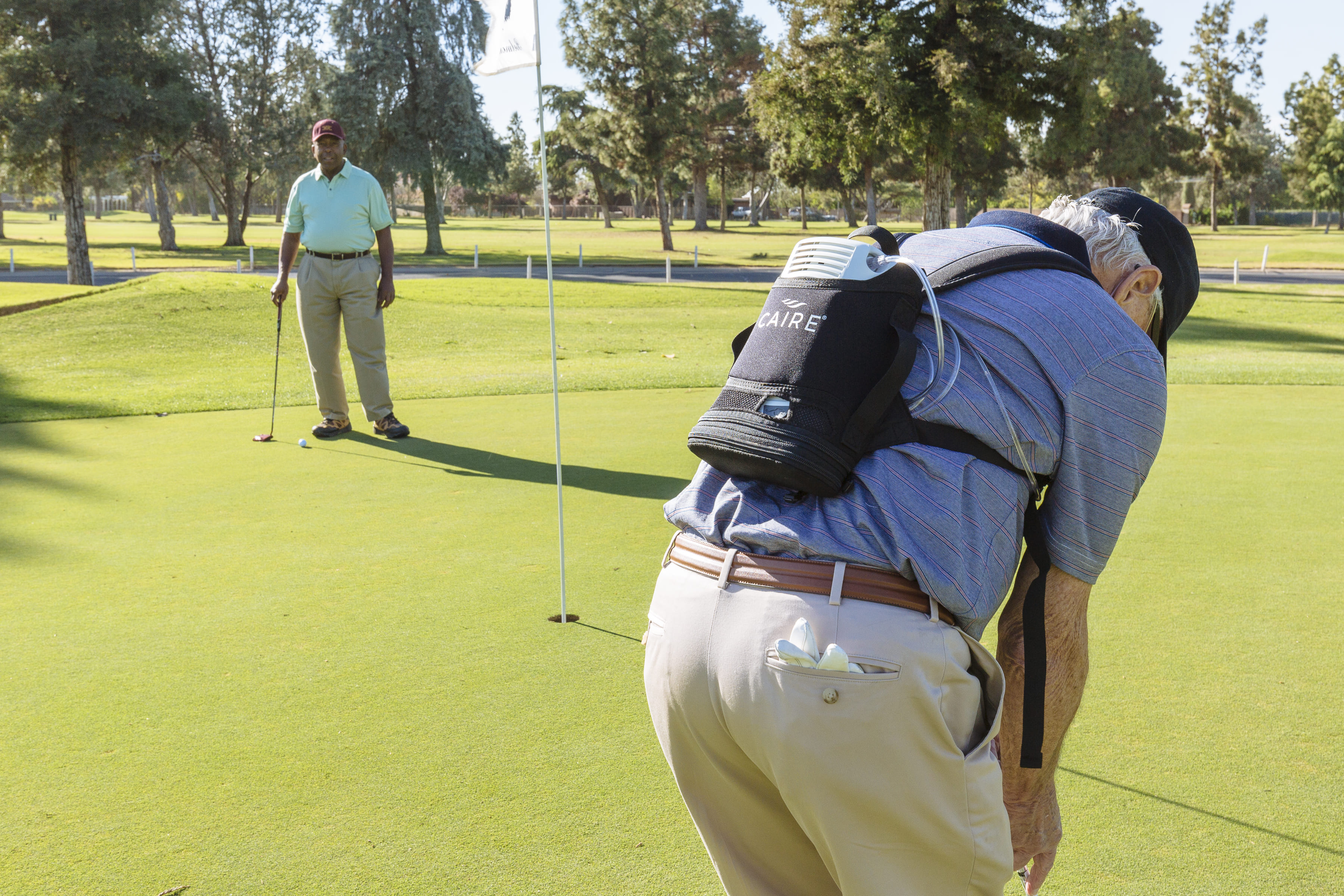
The Caire FreeStyle Comfort backpack is great for just about any activity you can think of. Whether you’re traveling with your POC or you want to get outside in golf when the weather's nice, this backpack will keep your oxygen unit snug to your back so that you can focus on enjoying your day. It also comes with adjustable padded shoulder straps to help you customize it to your liking.
Caire FreeStyle Comfort Small Battery
Like all other portable oxygen concentrators, the Caire FreeStyle Comfort is powered by durable and reliable lithium-ion batteries. This is the same type of battery that’s found in your cellphone or laptop and it’s known for providing a long battery life without adding a lot of weight. When you purchase any Caire FreeStyle Comfort package it will come with one “small” 8-cell battery unless you choose to upgrade to a larger one.
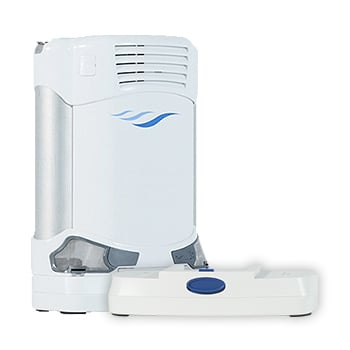
Compared to other portable oxygen concentrators on the market, the FreeStyle Comfort offers an outstanding battery life. Below you can see the expected battery life based on the flow setting that you’re using. As the flow rate increases, the battery life expectancy decreases. Keep in mind that over a very long period of time your battery might gradually lose its ability to hold a charge. Check out this guide to learn why lithium-ion batteries age and how to slow the rate that they deteriorate.
|
Flow Setting |
8-Cell Battery |
|
1 |
8 hours |
|
2 |
4 hours |
|
3 |
3 hours |
|
4 |
2.25 hours |
|
5 |
2 hours |
Caire FreeStyle Comfort Large Battery
The other battery option available for the FreeStyle Comfort is the 16-cell battery (sometimes called the “double” battery). This battery is not sold with the concentrator unless you upgrade your package but it provides twice as much battery life as the 8-cell battery. Below you can see the expected duration based on the flow setting you’re using.
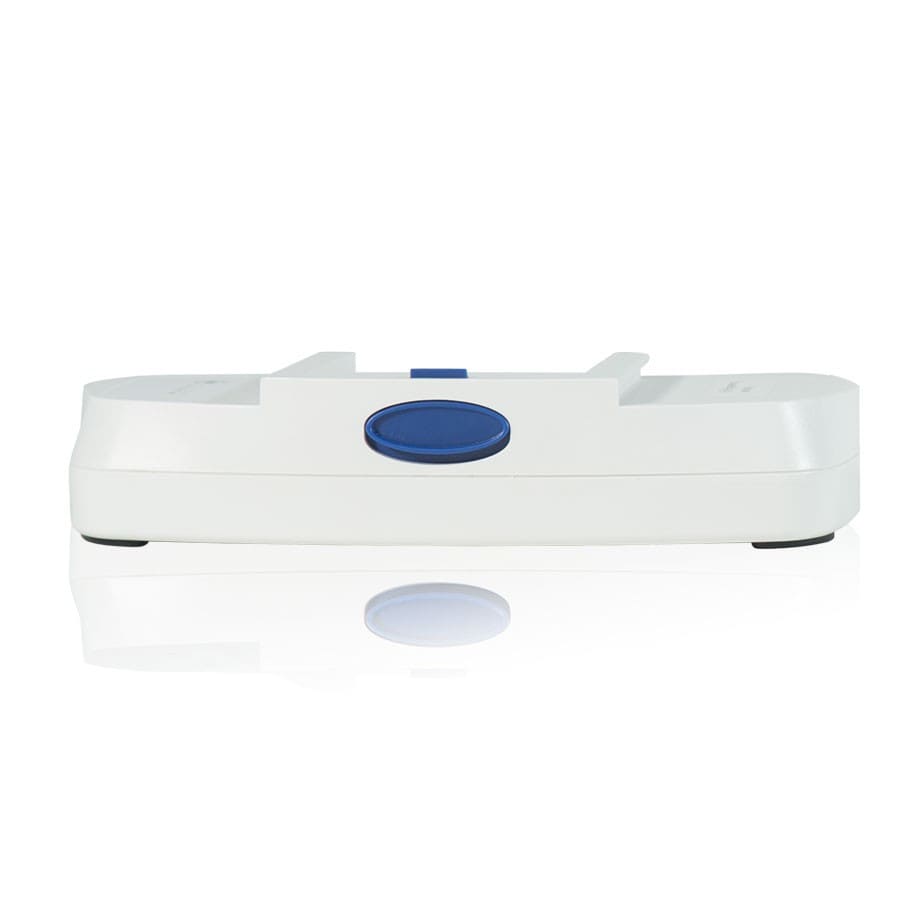
Ideally, before you purchase a POC, you will need to determine how much battery life you will need. If you live an active lifestyle or you travel a lot you might want to have one 16-cell battery and one 8-cell battery or even two 16-cell batteries. However, if you stay home a lot and have access to an outlet then you may be just fine with one 8-cell battery. Here at LPT Medical we always have great deals on batteries so we can help you get what you need.
|
Flow Setting |
16-Cell Battery |
|
1 |
16 hours |
|
2 |
8 hours |
|
3 |
6 hours |
|
4 |
4.5 hours |
|
5 |
4 hours |
Caire FreeStyle Comfort External Battery Charger
Normally, to charge your concentrator battery, it needs to be attached to your device. Then you can plug it into any electrical outlet. However, if you have more than one battery and want to keep them all charged at once, you’re going to need an external battery charger. This is a small and lightweight device that you attach to either your 8-cell or your 16-cell battery.
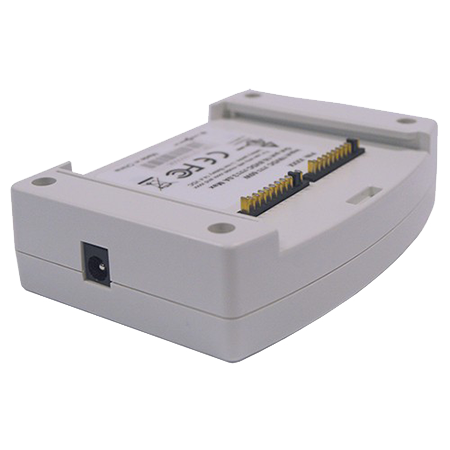
The external battery charger will add a lot of convenience to your day. Rather than having to charge your batteries back-to-back, you can charge multiple batteries at once. In other words, if you only have a short amount of time at home before you have to leave, you’ll be able to have both your batteries ready to go by the time you leave the house.
{{cta('fa8abc2a-1e88-4fa3-82fd-1cb5b9ed43b2','justifycenter')}}
The external battery charger also has a very small form factor so if you’re trying to cut down on carry weight while you’re traveling, you won’t have to worry too much about it.
Caire FreeStyle Comfort AC Adapter
An AC adapter is a cable that allows you to charge your POC via a wall outlet. The AC adapter comes standard with all Caire FreeStyle Comfort packages, but they are also sold separately in case yours is lost or stolen. This is a must-have accessory for the Caire FreeStyle Comfort because you won’t be able to charge your device at home if you don’t have one. It’s also important to note that if you’re traveling out of the country, you’ll need to use an adapter that will fit whichever region you’re in. You should also check the FreeStyle Comfort user manual to make sure the voltage is the same as the wall outlet you’re using.
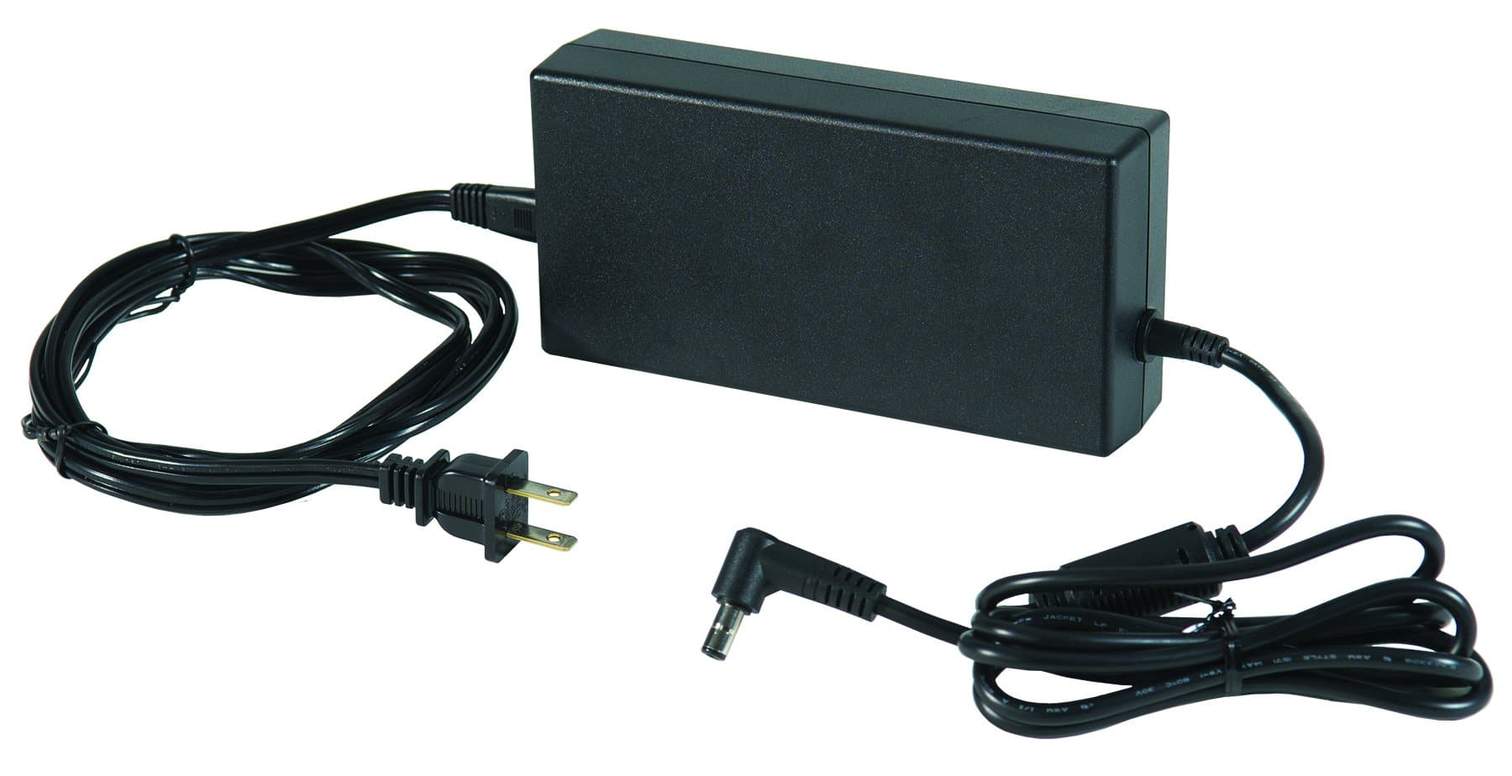
Caire FreeStyle Comfort DC Car Adapter
A DC adapter is similar to the AC adapter but instead of plugging into a wall outlet, it plugs into the cigarette outlet in your car. This is incredibly useful if you want to have a way to charge your POC while you’re on a road trip. You can even use the oxygen concentrator while it’s charging, so there’s no downtime whatsoever. You can feel free to make as many stops as you want in order to take a break or do some sightseeing along the way.
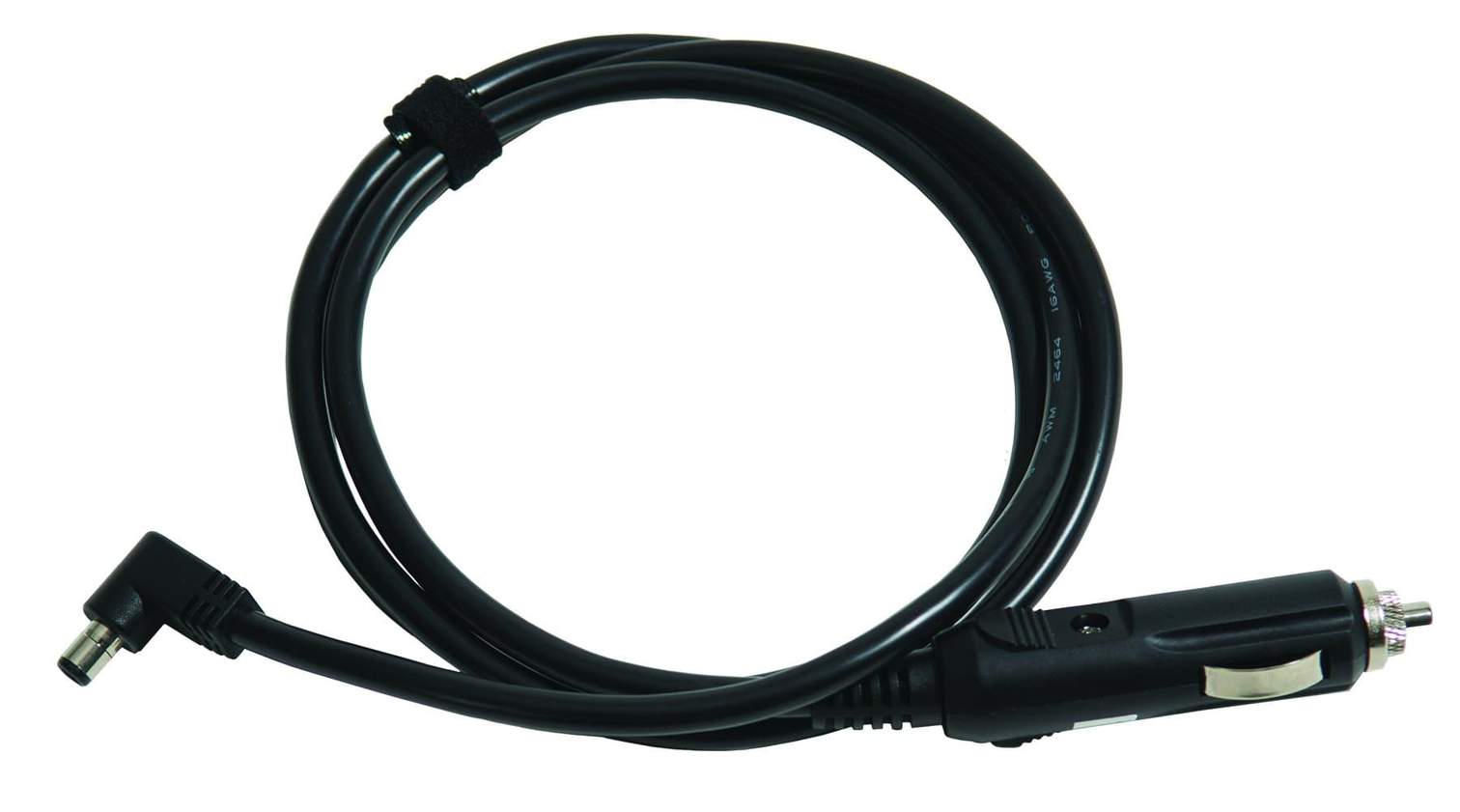
One thing to note is that it’s best not to charge your portable oxygen concentrator while the car is off. If you drain the car’s battery too much you might not be able to get it started again. What’s more, some cars don’t even allow you to use the electrical outlets while the car is off and it’s to avoid this exact issue. For more information about charging your Caire FreeStyle Comfort in the car, please consult the user manual.
Conclusion
The Caire FreeStyle Comfort is one of the lightest, smallest, and most powerful pulse dose portable oxygen concentrators ever produced. It has an extremely low failure rate and it offers a wide range of accessories that help you make the most of it. Accessories like the backpack and custom carrying case provide you with options as to how you want to carry your device and devices like the external battery charger will significantly reduce the amount of time it takes you to recharge your batteries.
While the FreeStyle Comfort is a great fit for most oxygen patients, there are still a couple of other portable oxygen concentrators we happily recommend here at LPT Medical. The Inogen One G5, for example, is similar to the FreeStyle Comfort, however, it offers one additional pulse flow setting and the device weighs slightly less overall.
The Inogen One G4 is another great option if you’re looking to limit weight as much as possible. However, it has a lower flow rate and battery life as a result. If you’re someone who requires continuous flow oxygen, the Respironics SimplyGo is a great choice. It’s the lightest continuous flow ever made and it’s extremely durable and reliable.
There are many types of home and portable oxygen concentrators out there, so if you’re confused about anything at all, please reach out to our respiratory specialists. We’ll walk you through the whole process of finding the device that’s right for your lifestyle needs and your budget.


 So we can find the best portable oxygen concentrator for your needs!
So we can find the best portable oxygen concentrator for your needs!













